Before my November 2019 visit, I had played Pinehurst no. 2 one time: in late June 2002. Both times it was 40 degrees…the first time celsius, the second time fahrenheit. Plus this time, there was a light drizzle from about the ninth tee to the twelfth green. Even with two layers of gloves, I could barely grip my 9-iron when I was standing on the ninth tee.
Despite the differences in playing conditions plus the removal of the rough and restoration of the pine needley-wire grassey-scrub along the fairways, Pinehurst no. 2 was fundamentally the same course that I remembered. The main feature, the fairly small, convex greens, hasn’t changed at all. What stuck in my mind last time about the greens was that for the most part, they weren’t that severe. Most of the green edges are only 3 or 4 feet high and the slopes will only carry your ball 10-15 ft. away from the green. Several areas off the edge of greens don’t have any slopes (but it’s still all short grass). I didn’t think that the greens were severe at all—they were more tricky than severe.
This time around, I noticed a bit more severity in the green complexes than I had last time. The one that had stood out to me before was long and left on the eighth green—the shot from there is impossible. It’s where John Daly had his famous meltdown where he hit a shot that was coming back to his feet and whacked it across the other side of the green while it was still in motion. While I still think that that’s the worst spot on the golf course, there are several others (left on five, anywhere but short on six, long on 14) that also leave nearly impossible recoveries.
Another thing that I had remembered from last time that I absolutely confirmed this time is that even though many of the green surroundings aren’t that severe, some of the shots to them are very intimidating. Many of the greens have false fronts and because you can’t see the rest of the surface of the green from the fairway, it looks like the green surface is minuscule, even if it isn’t. This is an issue on 1, 2, and especially 15.
But what became clearer to me this time is how well all of the pieces of this course fit together. It’s actually a very playable course for higher handicap golfers. There isn’t much directly in the way between the tee and the green on most holes and if you can avoid the bunker chokepoints, the fairways are fairly wide as well. Most greens give you an opportunity to roll the ball on from somewhere in front, although not necessarily the front middle. And the greens, while small, are modestly contoured. If you can convince yourself that the most difficult looking approaches are easier than they are and play conservatively, you should be able to get around this course.
So Pinehurst no. 2 is, by far more than any other course I’ve played, one where you need to know where you can’t miss and where it’s ok to miss. If you split the approach to each green in half left to right, at least one of the two halves will leave a playable next shot. But as I mentioned above, several greens have places where you absolutely cannot miss. Of course your first time around the course, you’re not going to know where these places are. The most unfortunate thing about Pinehurst no. 2 is that requires a few playings and a lot of attention to details to understand the hierarchy of misses around the green. That’s what makes it such an outstanding major tournament venue. But the general public isn’t going to have that option. But a good general rule is ‘err short rather than long and aim for the open areas in front of the greens.’ You’ll do just fine here most of the time if you leave your approaches a little short of the green.
The medium length par 4 first is one of the best opening holes that I’ve played. It’s wide-open until about 250, where there’s a fairway bunker on the left. There’s no need to go past this point as you’ll still have about 150 in. But this is one of the most visually intimidating approaches on the course—there’s a false front and the left side of the green is probably 5 or 6 feet above the base of the false front. The surroundings are closer to the level of the green on the right, but the green angles slightly from front right to back left along the bunker. If you aim at the right side, you’ll probably miss right.
Despite the differences in playing conditions plus the removal of the rough and restoration of the pine needley-wire grassey-scrub along the fairways, Pinehurst no. 2 was fundamentally the same course that I remembered. The main feature, the fairly small, convex greens, hasn’t changed at all. What stuck in my mind last time about the greens was that for the most part, they weren’t that severe. Most of the green edges are only 3 or 4 feet high and the slopes will only carry your ball 10-15 ft. away from the green. Several areas off the edge of greens don’t have any slopes (but it’s still all short grass). I didn’t think that the greens were severe at all—they were more tricky than severe.
This time around, I noticed a bit more severity in the green complexes than I had last time. The one that had stood out to me before was long and left on the eighth green—the shot from there is impossible. It’s where John Daly had his famous meltdown where he hit a shot that was coming back to his feet and whacked it across the other side of the green while it was still in motion. While I still think that that’s the worst spot on the golf course, there are several others (left on five, anywhere but short on six, long on 14) that also leave nearly impossible recoveries.
Another thing that I had remembered from last time that I absolutely confirmed this time is that even though many of the green surroundings aren’t that severe, some of the shots to them are very intimidating. Many of the greens have false fronts and because you can’t see the rest of the surface of the green from the fairway, it looks like the green surface is minuscule, even if it isn’t. This is an issue on 1, 2, and especially 15.
But what became clearer to me this time is how well all of the pieces of this course fit together. It’s actually a very playable course for higher handicap golfers. There isn’t much directly in the way between the tee and the green on most holes and if you can avoid the bunker chokepoints, the fairways are fairly wide as well. Most greens give you an opportunity to roll the ball on from somewhere in front, although not necessarily the front middle. And the greens, while small, are modestly contoured. If you can convince yourself that the most difficult looking approaches are easier than they are and play conservatively, you should be able to get around this course.
So Pinehurst no. 2 is, by far more than any other course I’ve played, one where you need to know where you can’t miss and where it’s ok to miss. If you split the approach to each green in half left to right, at least one of the two halves will leave a playable next shot. But as I mentioned above, several greens have places where you absolutely cannot miss. Of course your first time around the course, you’re not going to know where these places are. The most unfortunate thing about Pinehurst no. 2 is that requires a few playings and a lot of attention to details to understand the hierarchy of misses around the green. That’s what makes it such an outstanding major tournament venue. But the general public isn’t going to have that option. But a good general rule is ‘err short rather than long and aim for the open areas in front of the greens.’ You’ll do just fine here most of the time if you leave your approaches a little short of the green.
The medium length par 4 first is one of the best opening holes that I’ve played. It’s wide-open until about 250, where there’s a fairway bunker on the left. There’s no need to go past this point as you’ll still have about 150 in. But this is one of the most visually intimidating approaches on the course—there’s a false front and the left side of the green is probably 5 or 6 feet above the base of the false front. The surroundings are closer to the level of the green on the right, but the green angles slightly from front right to back left along the bunker. If you aim at the right side, you’ll probably miss right.
But the pitch from the bottom of the steepest part of the false front isn’t bad—5 or 6 feet uphill to a deep aspect of the green. And the run-off if you miss short-right or right is very mild; the green is elevated only 1-2 ft. above the surroundings on this side (same for the bad). Thinking back to the tee, it’s best to come in from the right-center of the fairway but as will be the case on many holes to come, most misses around this green aren’t that bad. Just don’t go left.
The long par 4 second is one of the toughest holes on the course. Again, bunkers encroach into the fairway on the left side at the length of a good drive. It’s best to be in the left side of the fairway but unless you’ve bombed your drive, you should play conservatively here—pitches from the front-left are fairly easy and every other miss leaves a very hard shot. I pushed my approach, ended up in the bunker short, and was very happy to make 5.
Three is a short par 4 that they like to convert into a drivable par 4 for big tournaments. The rest of us should lay up short of the bunker that comes into the fairway on the right. It’s always a little bit better to be on the right side of the fairway because if you miss short, the right side of the green is open. Both times that I played it, I missed the fairway right. If you avoid one of the clumps of grass (a big if), the packed sand is a good playing surface, but it still gives like a bunker if you hit the ball fat. You need to hit the ball cleanly from here.
Numbers four and five used to be a par 5 and par 4 respectively, now it’s reversed. I was worried about this change, but I think that it’s actually made both holes better. Four is an awkward driving hole—a slight dogleg left with a left-to-right sloping fairway. It’s important to shape your drive a bit from right to left. There’s an opening to the green between front-left and front-right bunkers. There’s a bit of a false front, but otherwise this is one of the simpler green complexes. Unless you short side yourself, any miss is ok.
Number 5 has always been one of the holes on Pinehurst no. 2 most likely to appear on great holes lists. So it was surprising to me that they would turn it into a par 5. But I think that this has substantially improved the hole. Whereas before it was easy to carry the bunkers up the left and have your ball run well down the fairway, now the bunkers encroach right where a good drive will land. Long hitters will still be able to carry them (although maybe not from the tips), but everyone else has to either play short or skirt/shape it around the trees on the right.
I think that the approach to the green also works better now. The bunkers short and right have always come into play if you didn’t hit a good drive, but now you have to carry them if you want to go for the green in two or play near them. The green is deep but narrow and its deepest aspect is in line with the edge of the encroaching bunkers. A lay-up to the right leaves an awkward angle and you’ll be aiming right at one of the pits of doom: the swale left of the green. This is another intimidating green to hit to, but short and right won’t get you into trouble (your lack of skills still might).
The long par 3 sixth is probably the only hole that I liked less than I had remembered. I think that the green here is just too severe—which you saw on display if you watched any of the US Amateur. Like the first, the false front is probably 5 or 6 ft. high and short is not a bad miss. But the green is severely pitched from back right to front left and any miss right or long creates a risk of knocking it off the other side of the green. I think that this hole would be better if all but the front of the green were about a foot lower but again, if you play conservatively, you should be ok.
While the bones of the medium-length par 4 seventh are the same as before, this is probably one of the most-improved holes with the Coore-Crenshaw restoration. The inside corner used to have a mess of bunkers, kind of like the old Fazio version of no. 4. The outside of the dogleg had some very ugly mounds with bunkers cut into them. That’s all gone. The waste bunker on the corner of the dogleg looks terrific and while the green is one of the least severe on the course, it’s important that you drive near the corner of the dogleg to shorten the approach.
The short par 5 eighth was and is one of my favorite holes on no. 2. A big part of this is the topography; the fairway slopes gradually forward for about the first 250 yards but then slopes left-to-right. The longer you drive it, the more you have to shape the ball. The approach is uphill and wide open. Whatever you do, don’t go long on the approach. Long and especially long left are the worst spots on the course. If you hit it over there, you’ll already be halfway down the ninth hole. You may want to consider just continuing on and playing the ninth from there.
The par 3 ninth is very tough, especially if you can’t feel your hands. The green is pretty shallow and there isn’t a lot of room to miss short or long. A safe shot is to the middle of the green but if the pin is on the left, this leaves a tough putt up a tier.
Ten is one of the toughest par 5s that I’ve ever played. The waste area encroaches on the right in the driving zone from the back sets of tees but even if you’ve hit a good drive, it’s one of the toughest lay-ups that I’ve ever seen. There are three staggered bunkers in the lay-up area. The one closest to the green is about 120 from the middle and unless you’ve killed your drive, you should play short of it.
But the green is shallow and wide and if the pin is on the left side (as it was on this day), it’s best to lay-up to the right side of the fairway. This means that you’ll have to skirt or carry the second lay-up bunker. I hit a good lay-up but still had an 8-iron to the green. I played to the middle and two-putted from 40 ft. If the flag is on the left and you have anything more than a wedge, I’d suggest that you do the same. Over the green is no good.
The par 4s eleven and twelve are not stand-out holes…which just goes to show how good this course is. The drive on eleven is semi-blind and again, the junk on the left cuts in right where your good drive would go (funny how that keeps being true). In any case, if the flag is anywhere other than the front-right, the right side of the fairway is better as you play into the deepest aspect of the green from here. If the flag is front-right, a little more to the left is optimal as the front-right bunker obscures the front-right of the green from the right side of the fairway.
Pretty much anywhere in the fairway on twelve is fine but the further you go, the more the bunkers encroach on the right. As long as you carry the bunker about 10 yards short of the green, a miss short is fine. This is also the rare occasion where a miss long is fine. The green is large and fairly flat, with only weakly convex edges.
The short par 4 thirteenth is not a difficult driving hole, but it’s important to drive it to a yardage that you like because the approach is uphill and has probably the steepest false front on the course. This hole feels more conventional to me than a lot of the others on no. 2 because of the natural green site on the ridge. Most of the greens here are built up on relatively flat land and what makes them brilliant and unusual is how they were built up on flat land. But this green site does bring some variety to the course, which is no bad thing.
The long par 4 fourteenth is another of my favorite holes. The concept on the drive is the same (the further you go, the narrower it becomes), but the approach to the green and the green itself are beauties. A bunker crosses into the middle of the fairway from the right about 15 yards short of the green and there’s a swale between this and the green that continues up the right side. But the approach from the front-left is completely open and flat. A miss in the front-left quadrant leaves a simple pitch.
But here’s an interesting thing to notice: the green appears to rise in the back while the surroundings appear to slope away in this directions. That suggests that the deeper you play into the green, the more severe an offline miss is. And this is absolutely correct. Anything wide further than halfway into the green is trouble. And over this green is in the running with over the eighth for worst spot on the course.
The par 3 fifteenth is one of the most intimidating holes that I’ve ever played. It looks like you’re playing to the top of a globe, where pretty much anything but a perfect shot will roll off. The intimidation factor caused me to chunk my tee shot in 2002 and miss short left. This time, it was so cold that I couldn’t even reach the green for 180 yards with a well struck 4-iron (normally goes about 205). But despite the intimidation, a pitch (or putt) from just short of the green isn’t that hard. Still, this was the hardest hole in the stroke play portion of the 2019 US Amateur, averaging 3.66! So I’m beating the average in my two rounds (4 in 2002, 3 in 2019).
The short par 5 sixteenth is a very good driving hole, with a diagonal bunker up the left side. The more of this bunker that you carry, the better chance you have of having your ball bound down the fairway. If I were to make one criticism of no. 2, it’s that there aren’t enough drives with hazard set at an angle to the tee where a good drive on an aggressive line makes the hole easier. Most of the driving hazards here come in the form of fairway pinched by waste area/bunkers in the driving zone. The approach is slightly downhill to a green which has a false front, but is fairly open in front. If you’re laying up, be aware that there’s a hidden bunker on the left about 100 yards short of the green.
Seventeen is a fairly straight-forward downhill par 3. The green is narrow in the front, but fairly deep. Long here is less trouble than on most other holes.
Which brings us to the final hole, one of the best finishing holes that I’ve played. As I mentioned in my review of no. 4, there’s pretty stiff competition in this area for best finishing hole between no. 4, no. 2, and Mid Pines. They’re all tough, but no. 2’s is probably the toughest. While there’s more room off this tee than on most holes, you’ll want to keep your drive near the bunker on the left. That’s because the green is deep but narrow and from the right side of the fairway, you play to the deepest aspect of the green. It’s a very awkward shot from the left side of the fairway because in addition to shooting across the green, you have a bunker in your way on the left side and you’re playing directly at another through the green on the right.
Wherever you drive it, you have 10-15 yards between the front bunker and the front of the green and while you’ll be in a swale, it isn’t that hard a shot. As with the rest of the course, if you manage your misses, you’ll have a chance. I came up a little bit short, pitched to about 8 ft. from the back-left hole location, and made the putt for a 79—which made me pretty damn happy because I could barely hit the ball in the middle of the round.
I think that Pinehurst no. 2 is deserving of all of the accolades that it gets. The concept of the greens is so simple, yet I’ve never seen another course that comes even close to pulling it off—even though architects are putting chipping areas around their greens all the time now. The genius is in the subtlety and the balance; many of the green edges are only 3 or 4 ft. high and the slopes only take your ball 10-15 feet away from the green. This shot is tricky (because you’re probably not used to playing it), but it’s not ‘hard.’ A few places are more severe but there isn’t a single green on this course that doesn’t give you ample room to have a fairly simple next shot. This means that the course is very playable for a weaker player who’s trying to run the ball into the green, but very difficult for the better player who’s used to attacking pins and making birdies. Unless the course is very soft (not common considering it’s on pure sand), the aggressive approach is likely to result in a lot of bogies and doubles—to which the 77.09 scoring average (!) in the two stroke play rounds of the 2019 US Amateur attests.
If I had one criticism of the course, it’s that there isn’t enough variety off the tee. It’s a very tough driving course, but the difficulty is mainly for longer hitters in squeezing their drives past choke points. There are very few holes with diagonal driving hazards. Others have pointed to the lack of undulation on the green surfaces as a weakness but I don’t agree—given the size of the greens and the intricacies of their surroundings, undulating greens would be overkill. You could make the argument that there could be more variety in the size of the greens and that if there were a few larger ones, those could have more undulation. That’s a fair point.
But the concept of this course is so original and well-executed that I think it’s fine just the way it is. Changing some of the greens, even if it would add a bit more variety, would change the concept of the course. It’s all about managing your approach shots—knowing where not to hit it around the greens and which pins allow you to be more aggressive. Approaches could still be exacting if some of the greens larger and more undulating, but it would change how this course is exacting.
See that’s one of the nice things about golf courses—there are a lot of them. And because there are a lot of them, they can be interesting in different ways. But in the thousands of golf courses in the world, I doubt that there is another course that has the same consistent concept as no. 2 and even if there is, it probably isn’t nearly as good. So even if some of these changes would ‘improve’ the course, they wouldn’t actually improve it because the course would start to lose what makes it unique.
In addition to being probably the most original course that I’ve played, Pinehurst no. 2 is clearly the best. Admittedly, I haven’t played many great courses in the US, but I’ve played all of the London area heathland courses and the England/Wales links courses like Royal St. George’s and Rye. While the best of those courses all have several great holes, Pinehurst no. 2 has no weak ones. There isn’t a single hole here that is less than very good and several which are great (at least 1, 2, 5, 8, 14, 18, maybe a few more). The weakness of the London area heathland courses is the greens and obviously, that’s not the case with no. 2. Throw in the fact that it’s a great course for both tournaments and every day play and I can hardly imagine a more effective golf course. It’s just a shame that the prohibitive cost makes it unlikely that most golfers will be able to familiarize themselves with it.
If I had one criticism of the course, it’s that there isn’t enough variety off the tee. It’s a very tough driving course, but the difficulty is mainly for longer hitters in squeezing their drives past choke points. There are very few holes with diagonal driving hazards. Others have pointed to the lack of undulation on the green surfaces as a weakness but I don’t agree—given the size of the greens and the intricacies of their surroundings, undulating greens would be overkill. You could make the argument that there could be more variety in the size of the greens and that if there were a few larger ones, those could have more undulation. That’s a fair point.
But the concept of this course is so original and well-executed that I think it’s fine just the way it is. Changing some of the greens, even if it would add a bit more variety, would change the concept of the course. It’s all about managing your approach shots—knowing where not to hit it around the greens and which pins allow you to be more aggressive. Approaches could still be exacting if some of the greens larger and more undulating, but it would change how this course is exacting.
See that’s one of the nice things about golf courses—there are a lot of them. And because there are a lot of them, they can be interesting in different ways. But in the thousands of golf courses in the world, I doubt that there is another course that has the same consistent concept as no. 2 and even if there is, it probably isn’t nearly as good. So even if some of these changes would ‘improve’ the course, they wouldn’t actually improve it because the course would start to lose what makes it unique.
In addition to being probably the most original course that I’ve played, Pinehurst no. 2 is clearly the best. Admittedly, I haven’t played many great courses in the US, but I’ve played all of the London area heathland courses and the England/Wales links courses like Royal St. George’s and Rye. While the best of those courses all have several great holes, Pinehurst no. 2 has no weak ones. There isn’t a single hole here that is less than very good and several which are great (at least 1, 2, 5, 8, 14, 18, maybe a few more). The weakness of the London area heathland courses is the greens and obviously, that’s not the case with no. 2. Throw in the fact that it’s a great course for both tournaments and every day play and I can hardly imagine a more effective golf course. It’s just a shame that the prohibitive cost makes it unlikely that most golfers will be able to familiarize themselves with it.
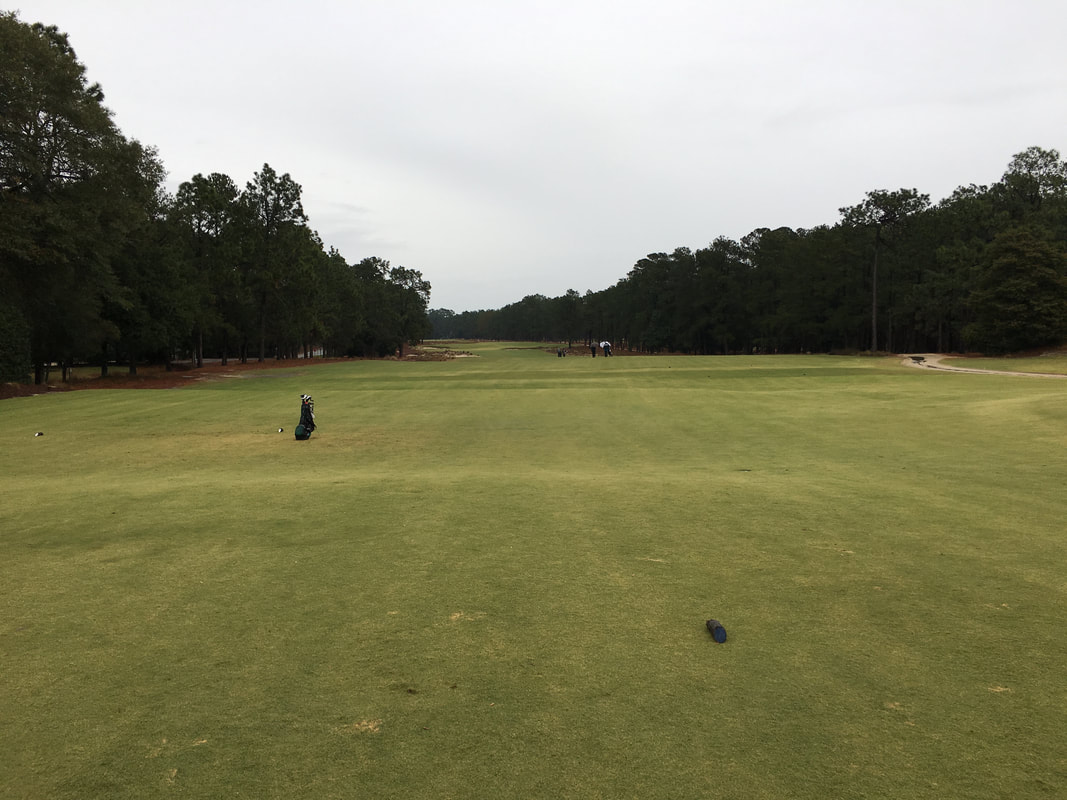
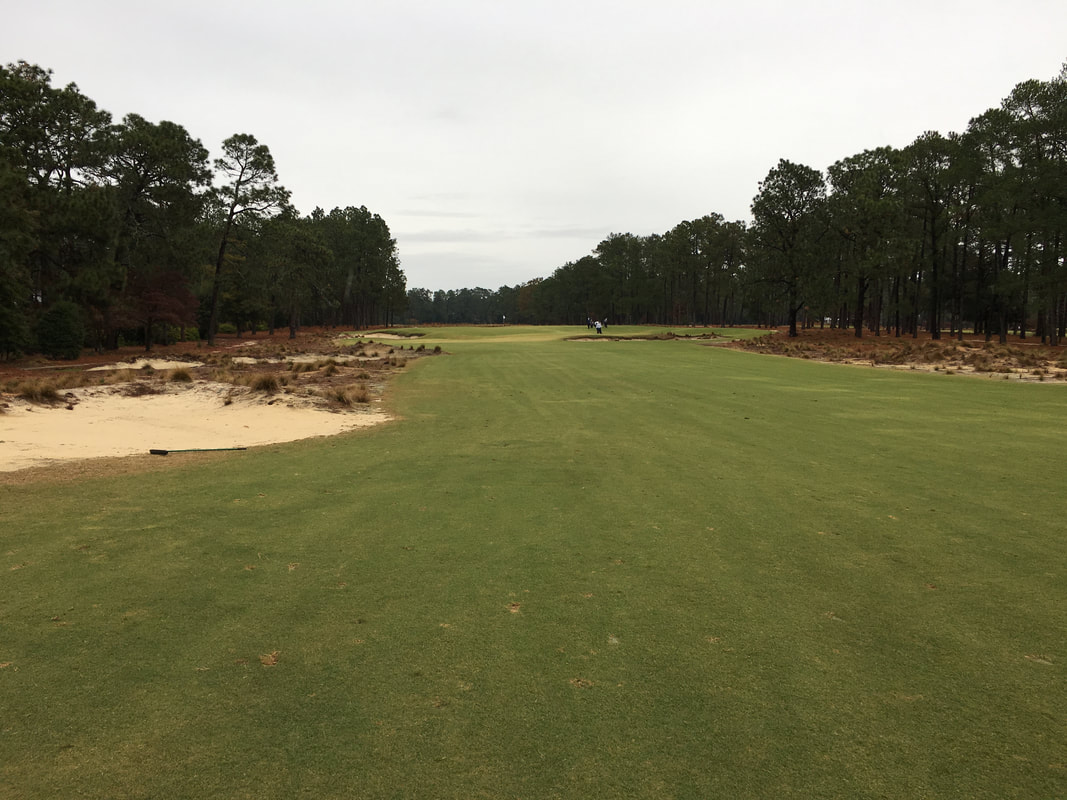
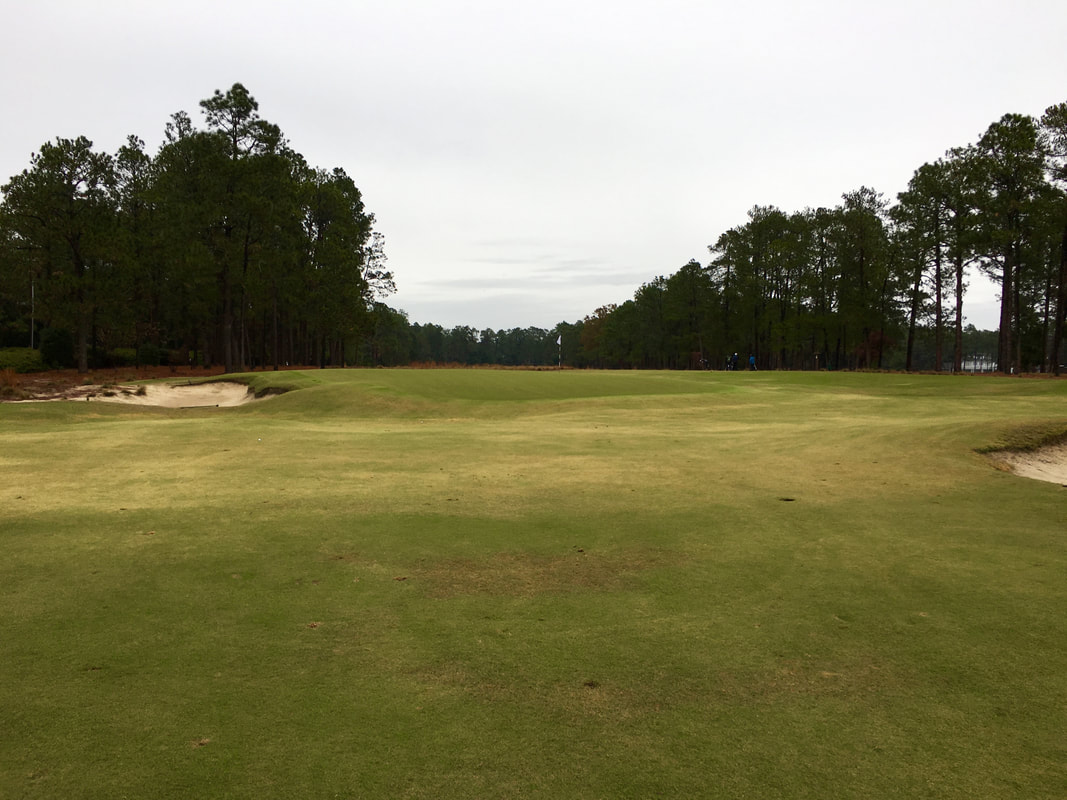
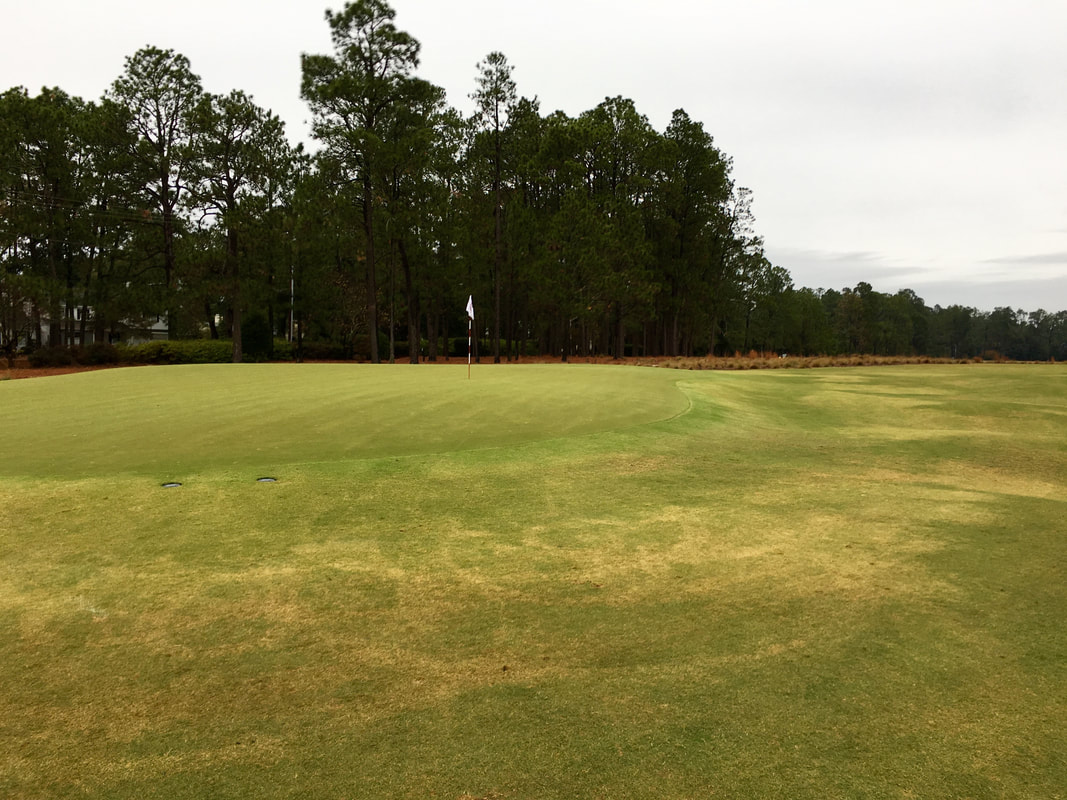
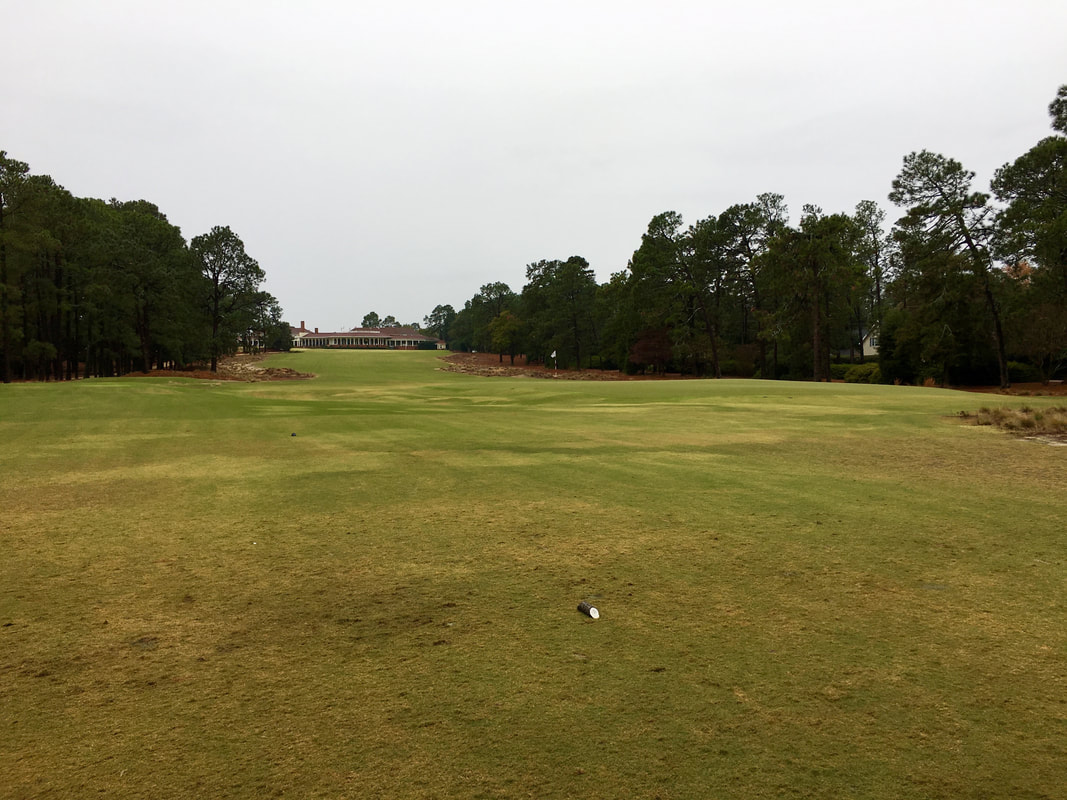
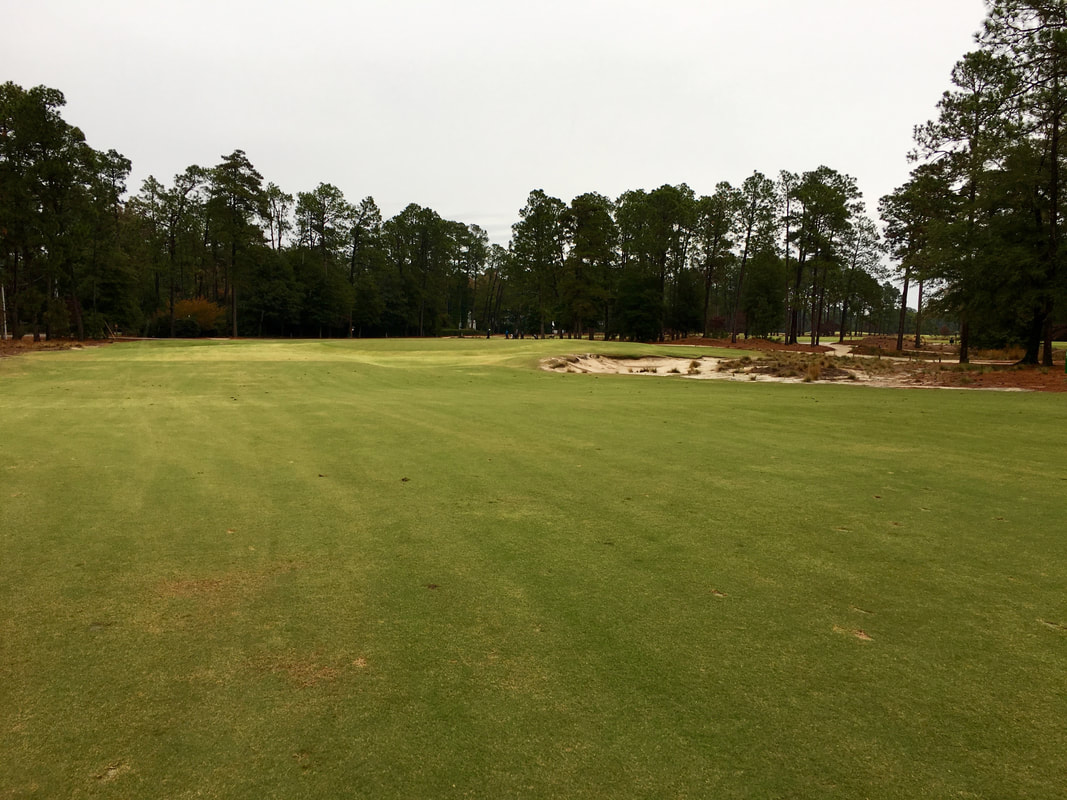
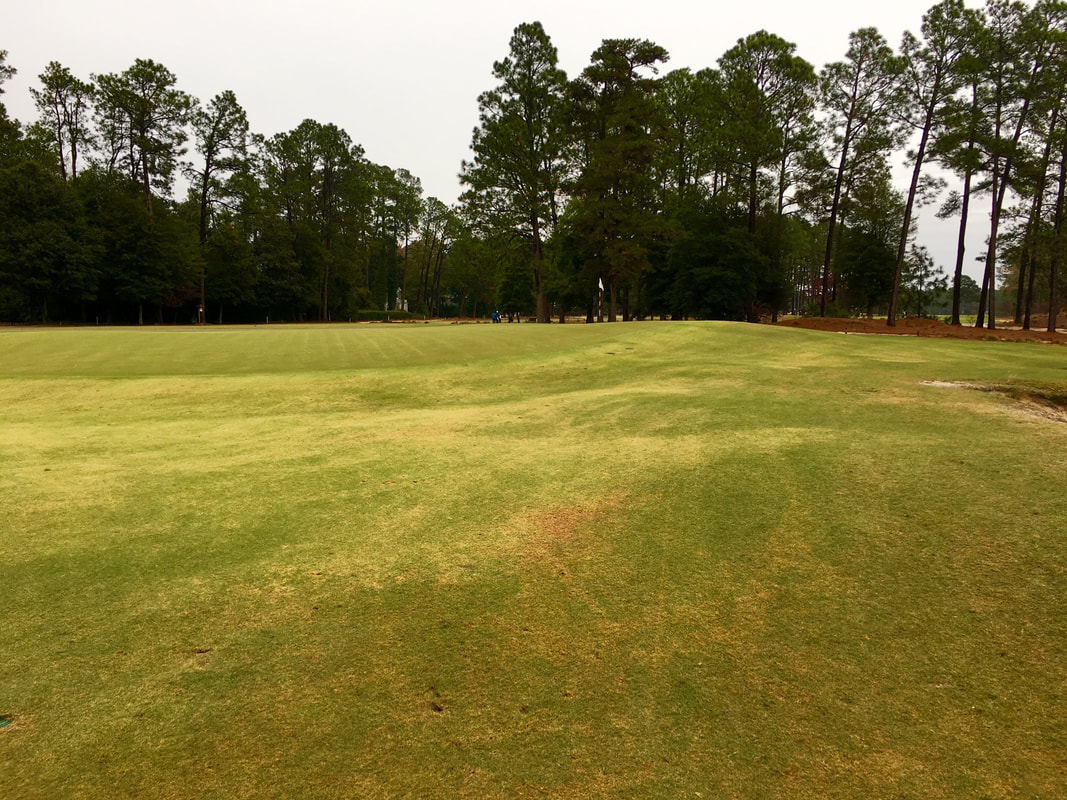
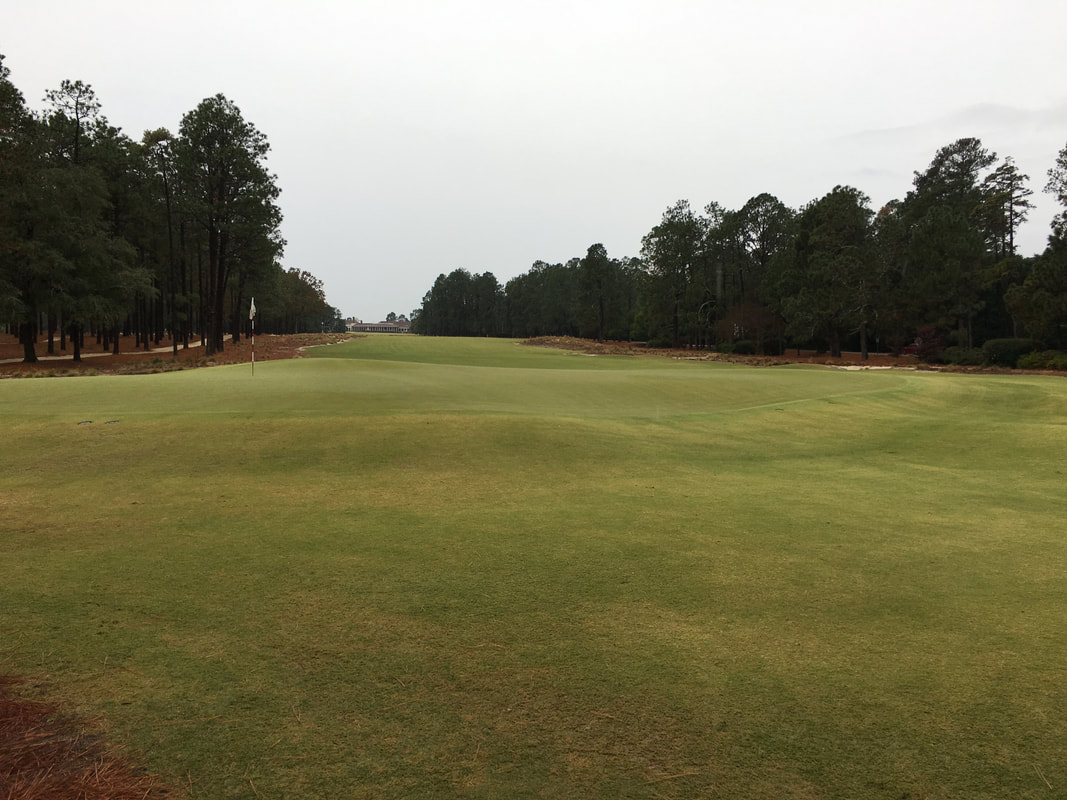
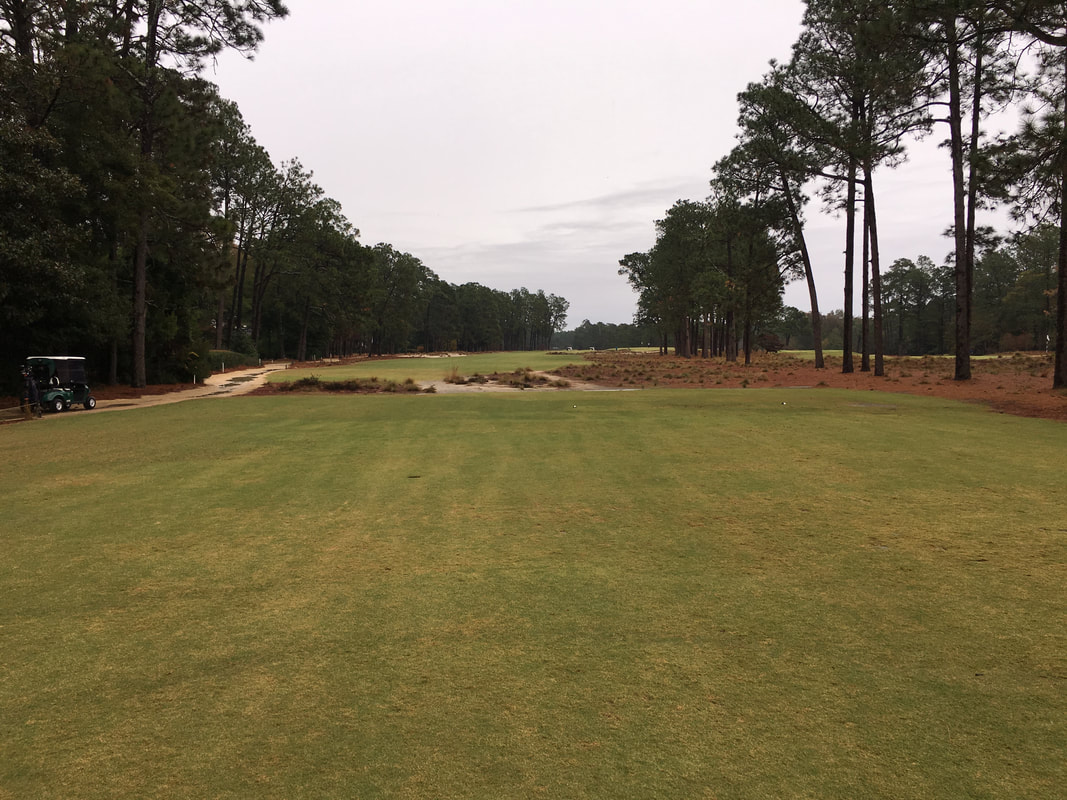
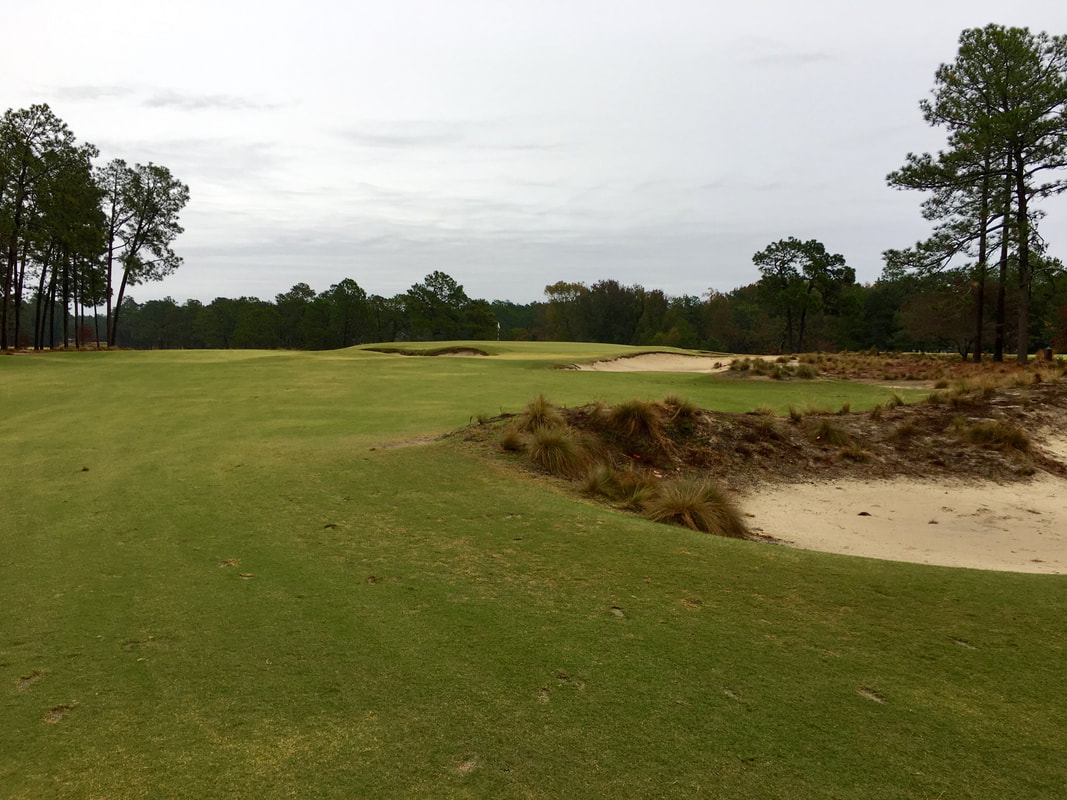
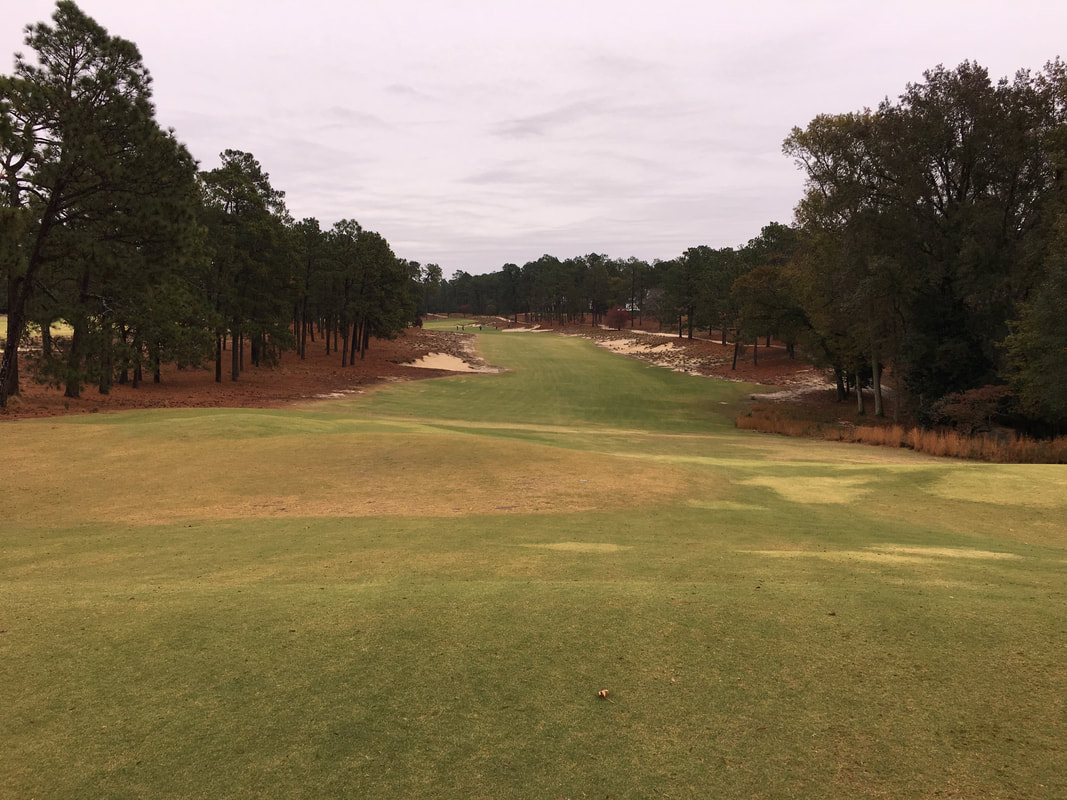
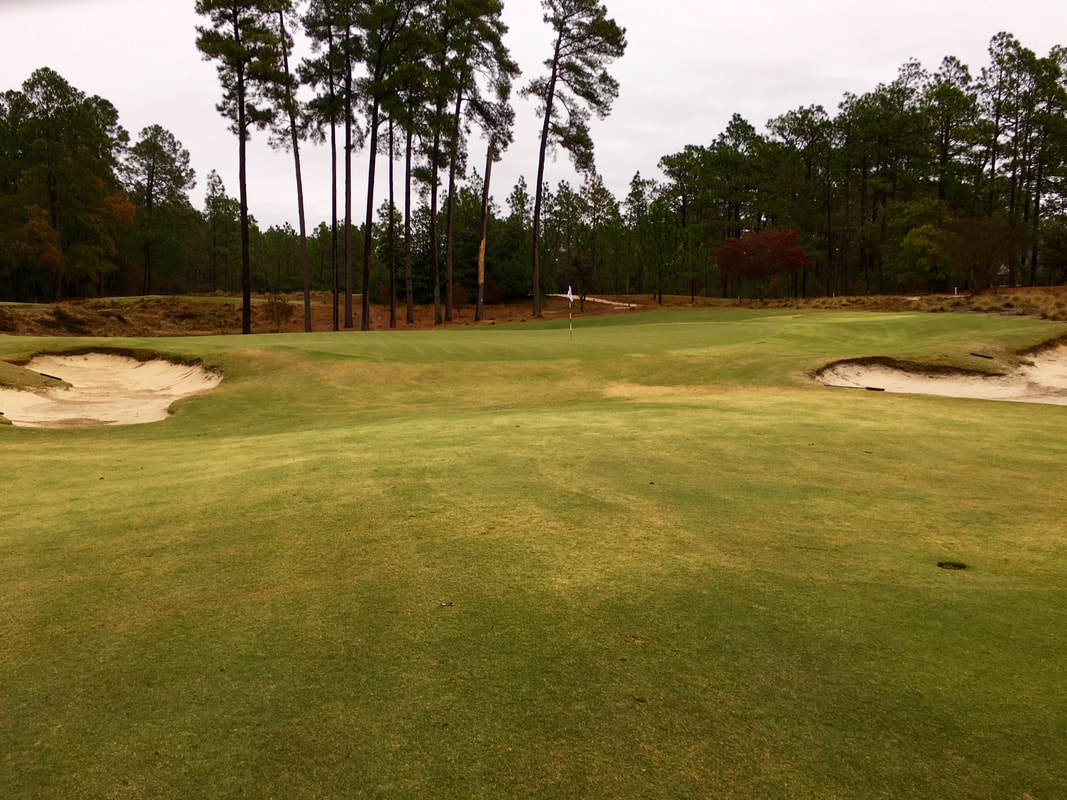
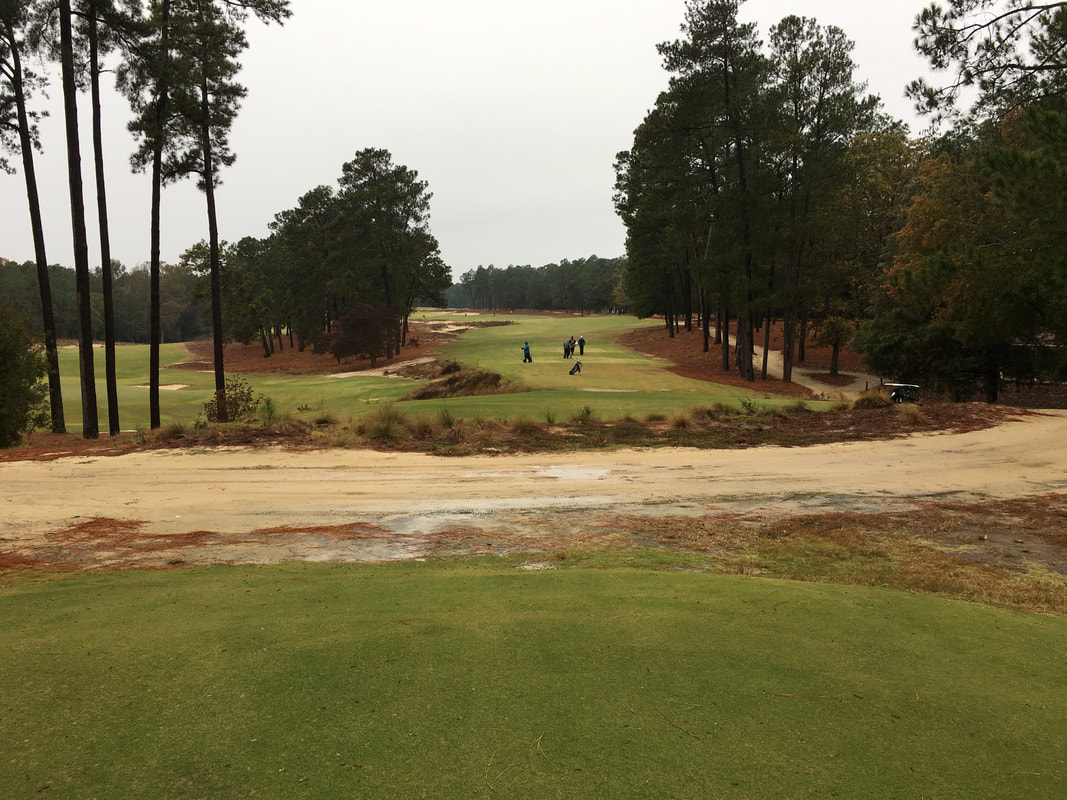
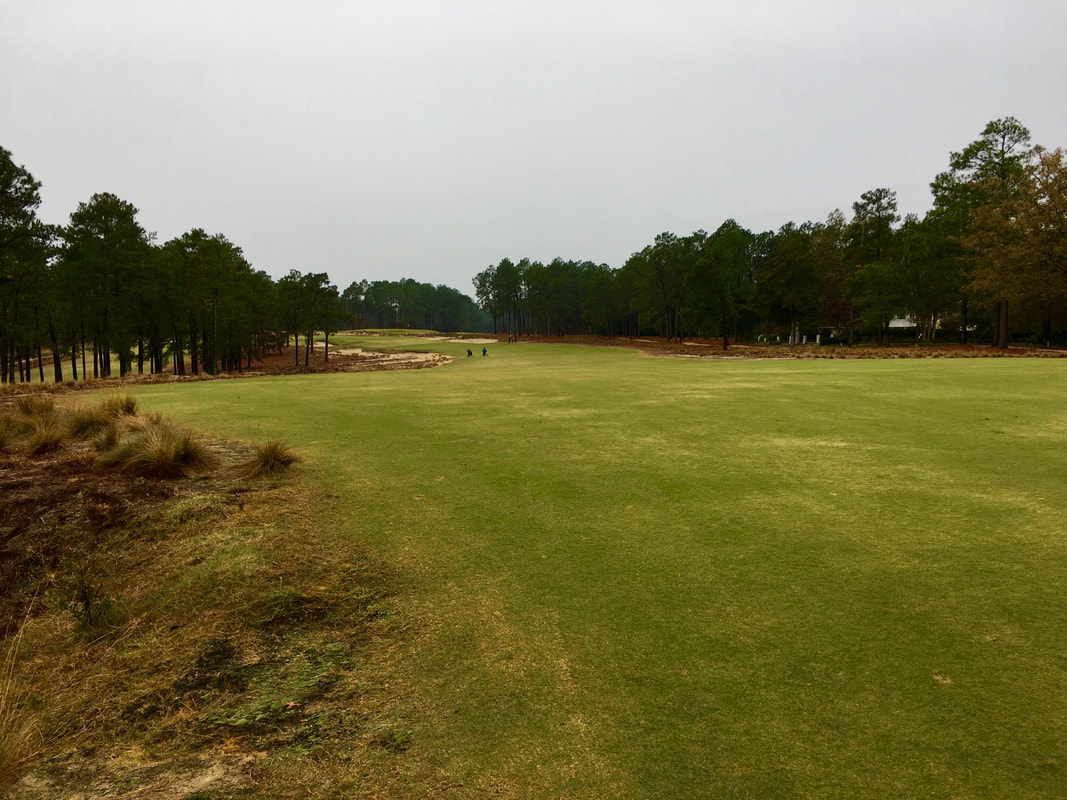
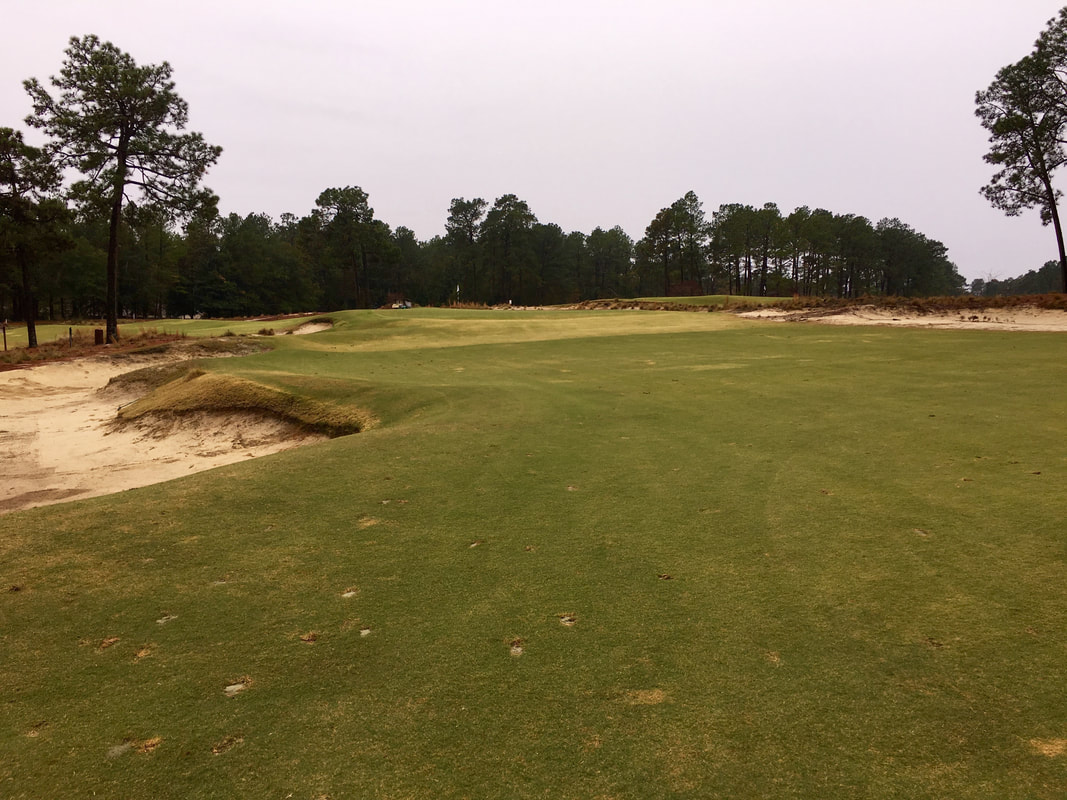
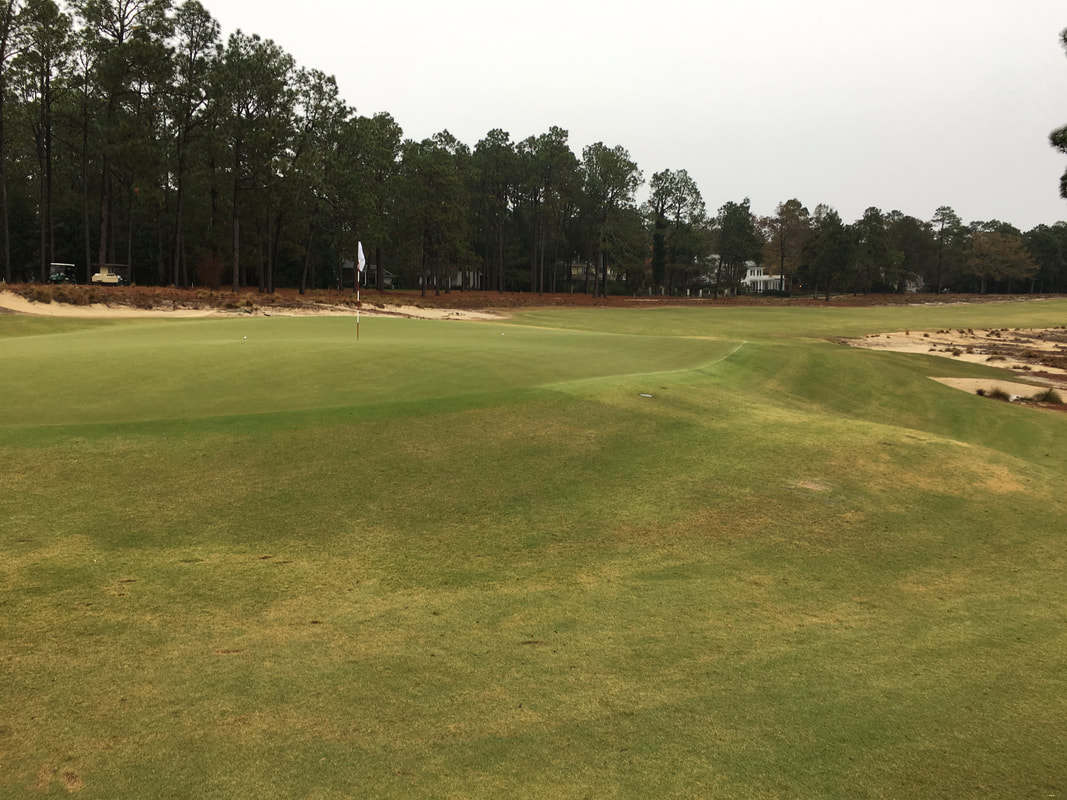
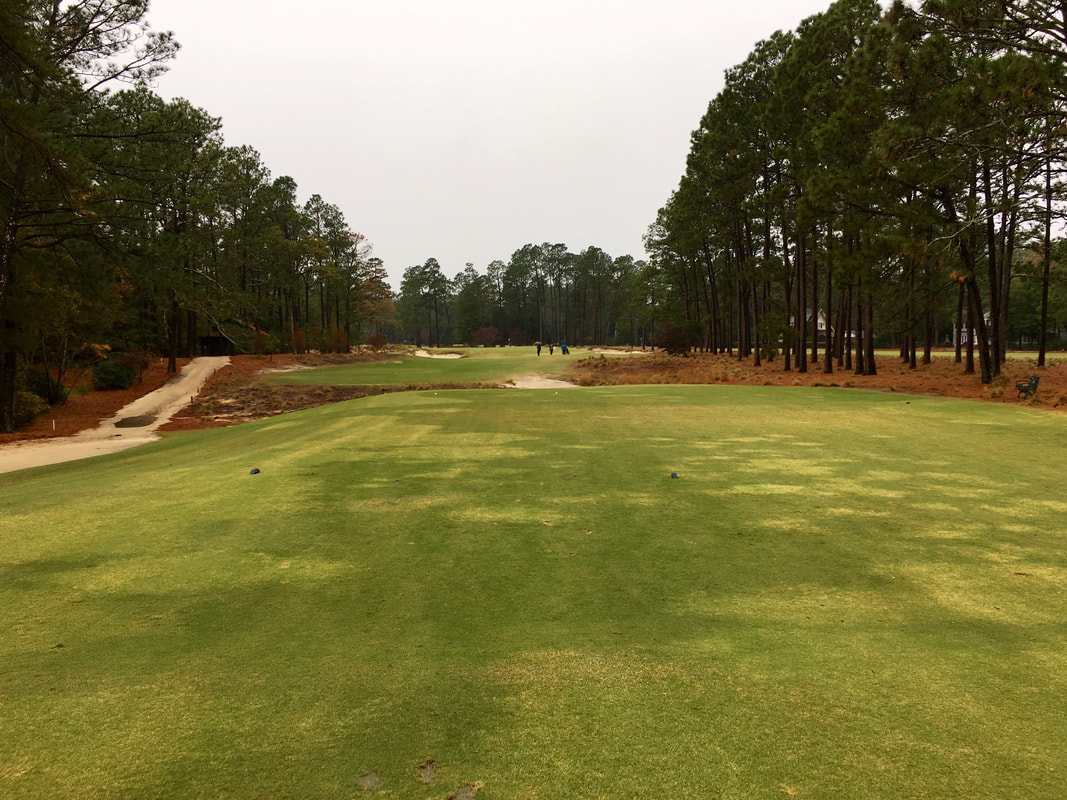
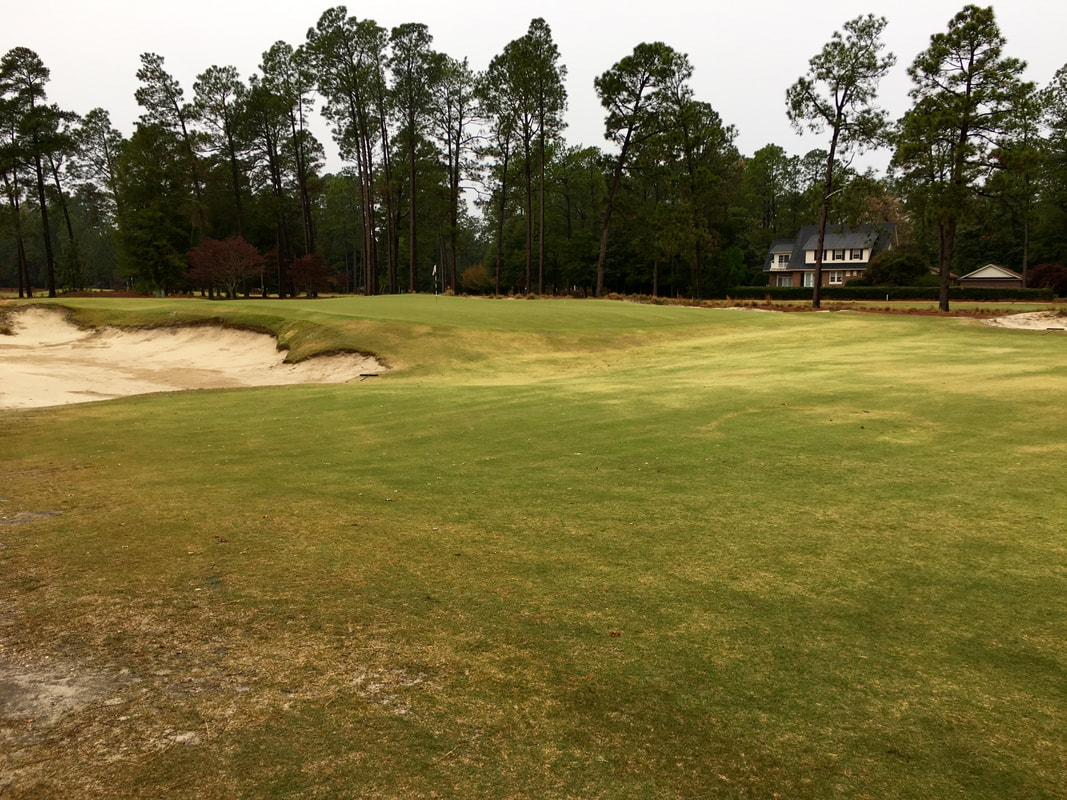
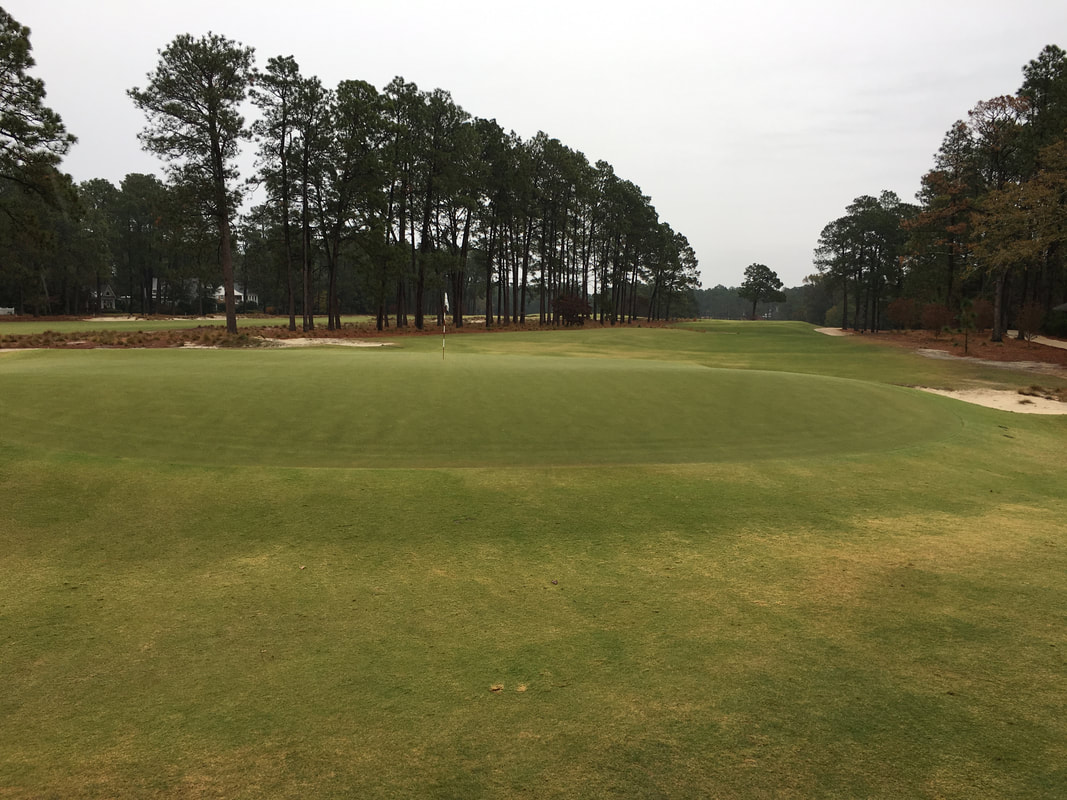
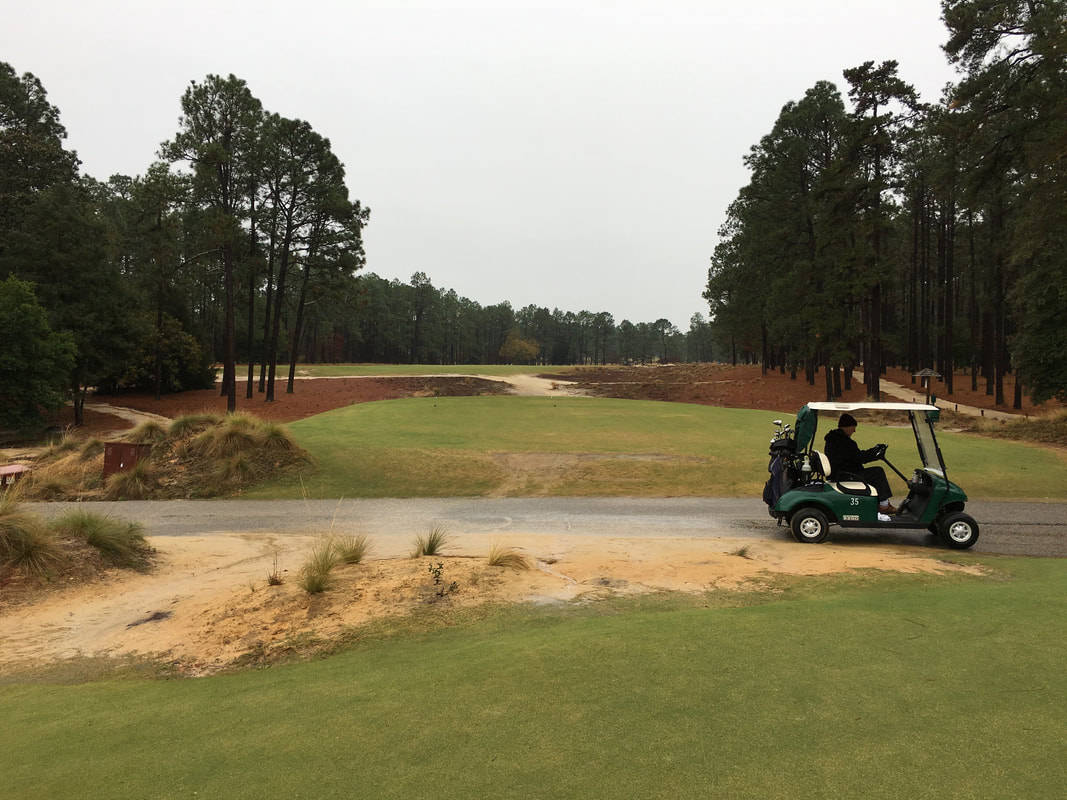
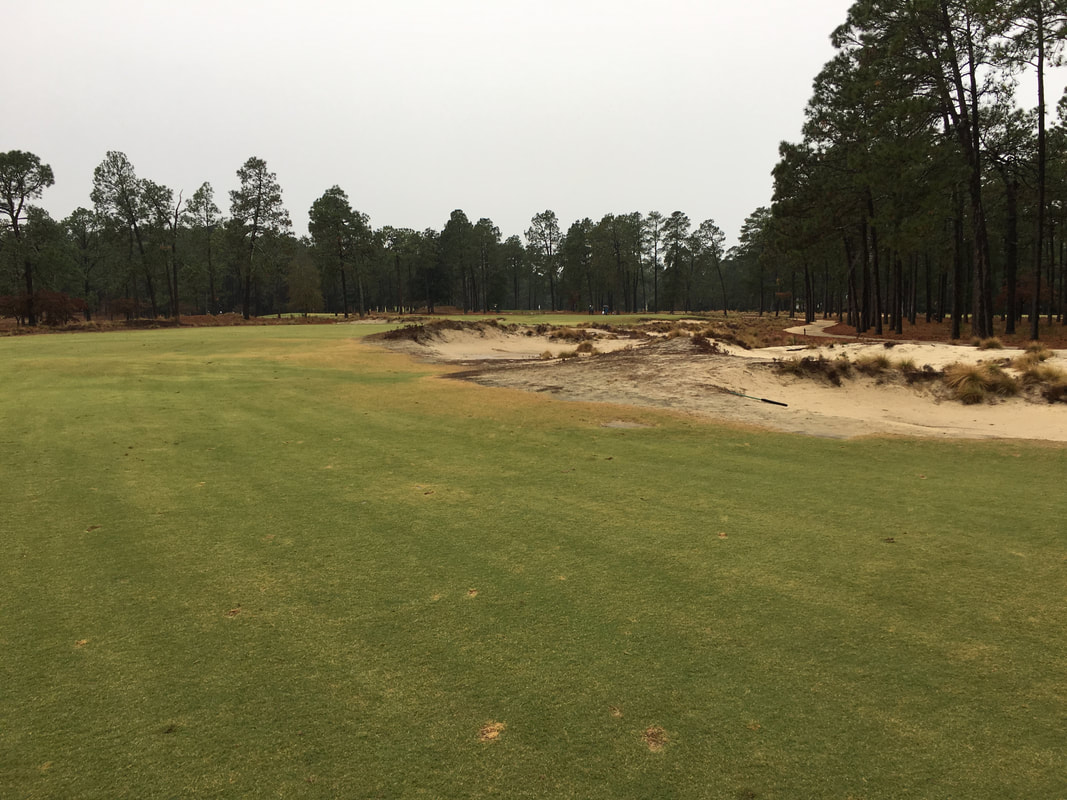
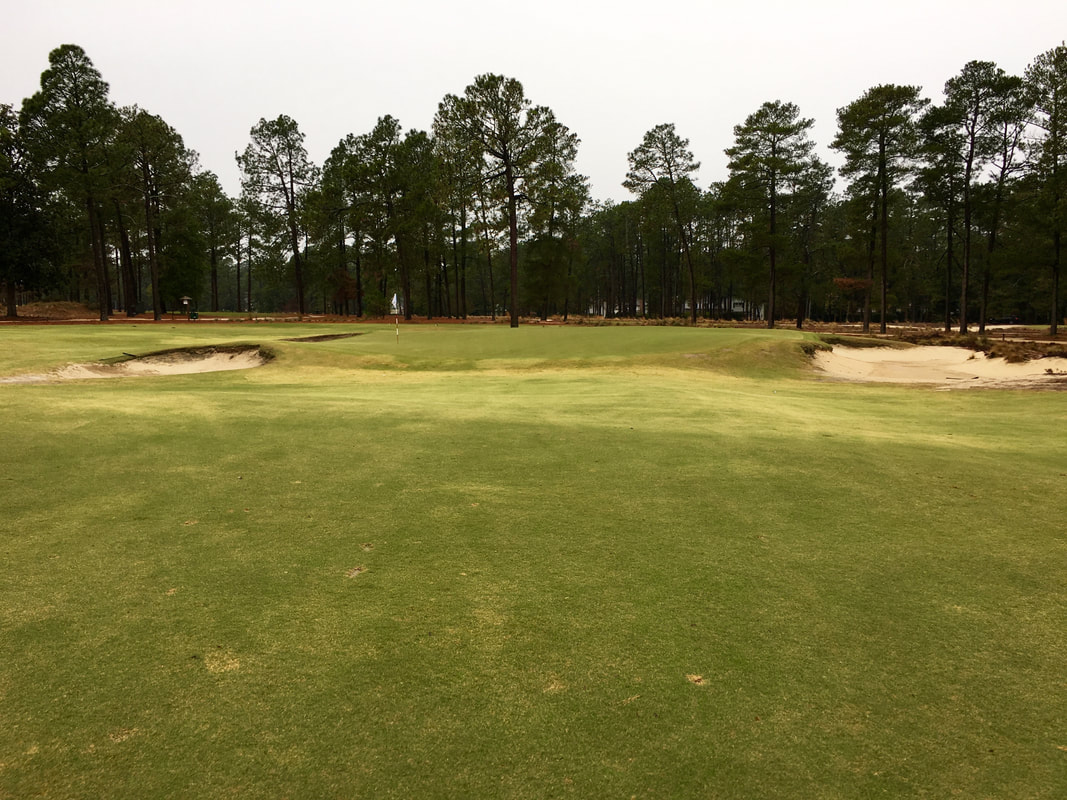
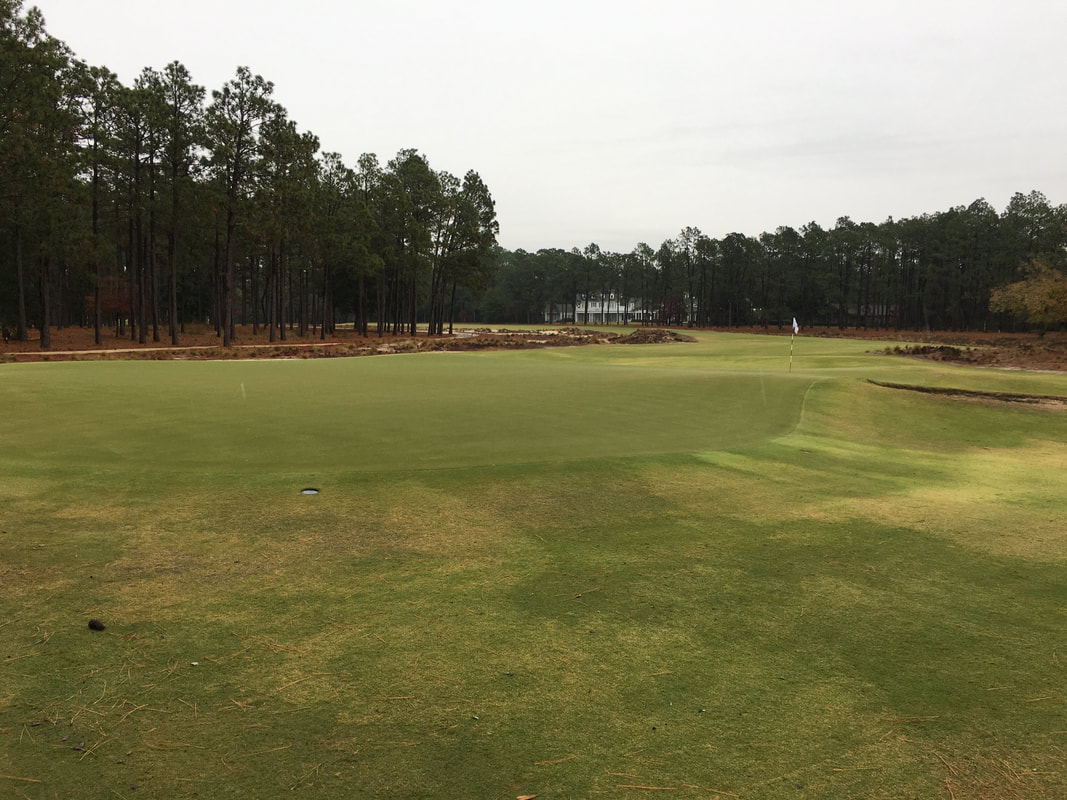
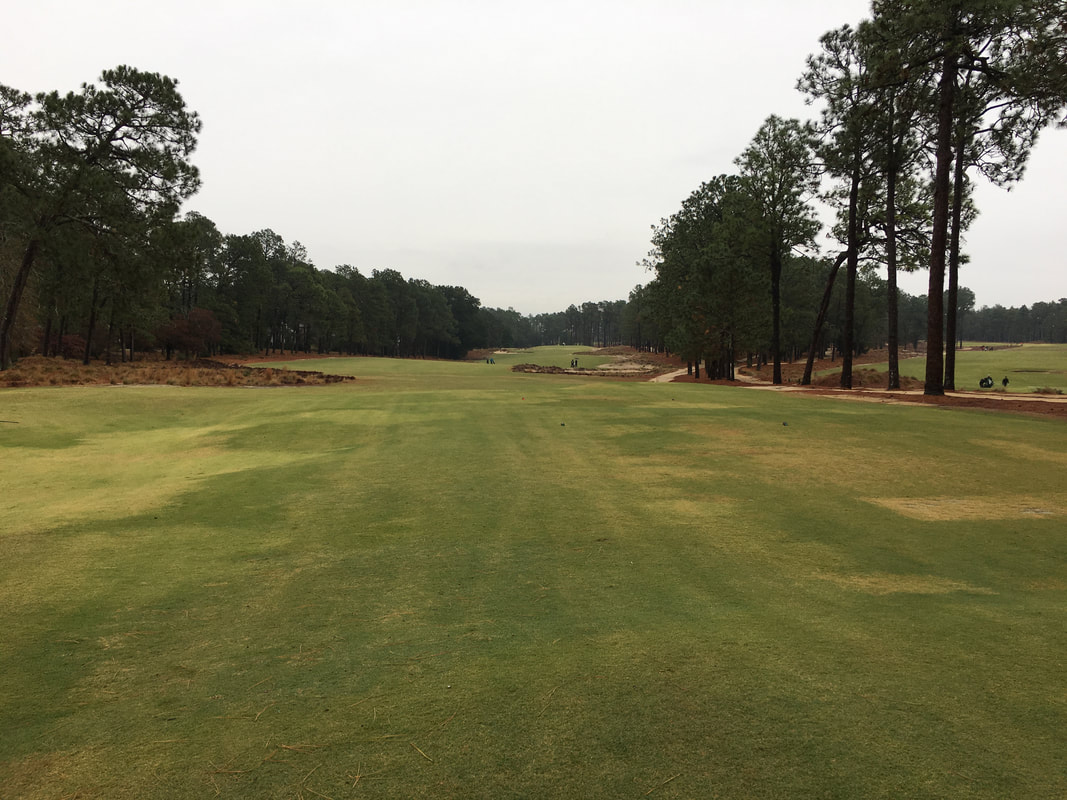
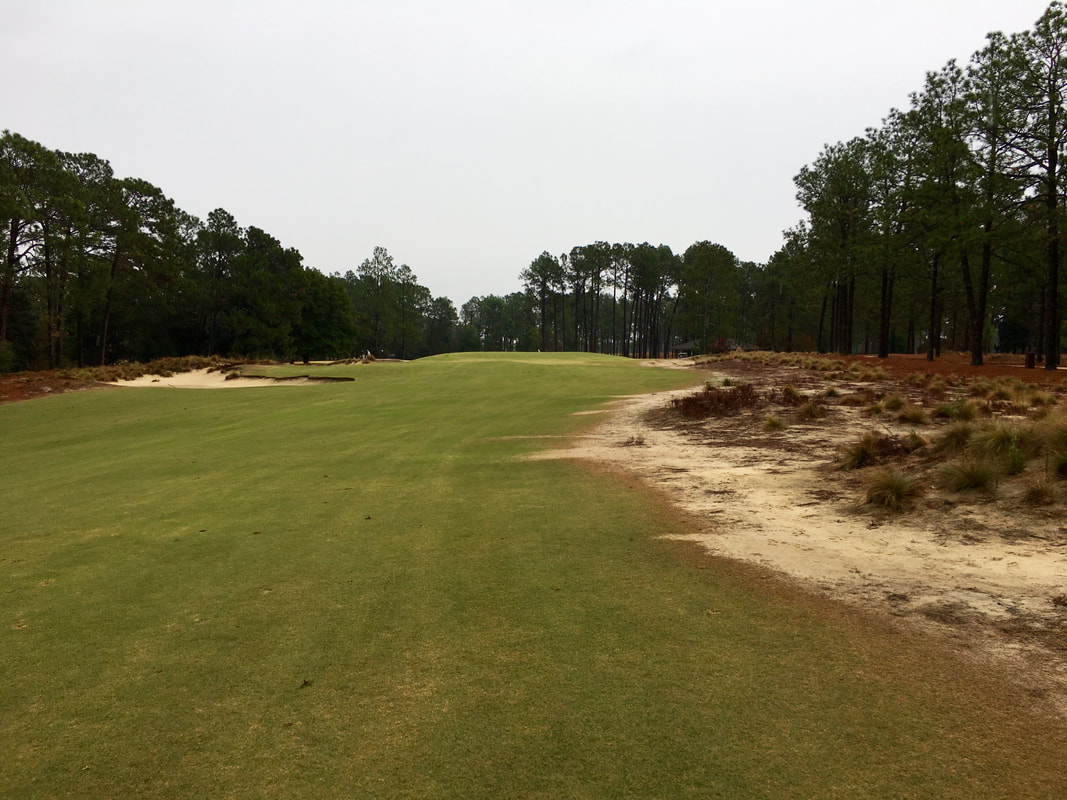
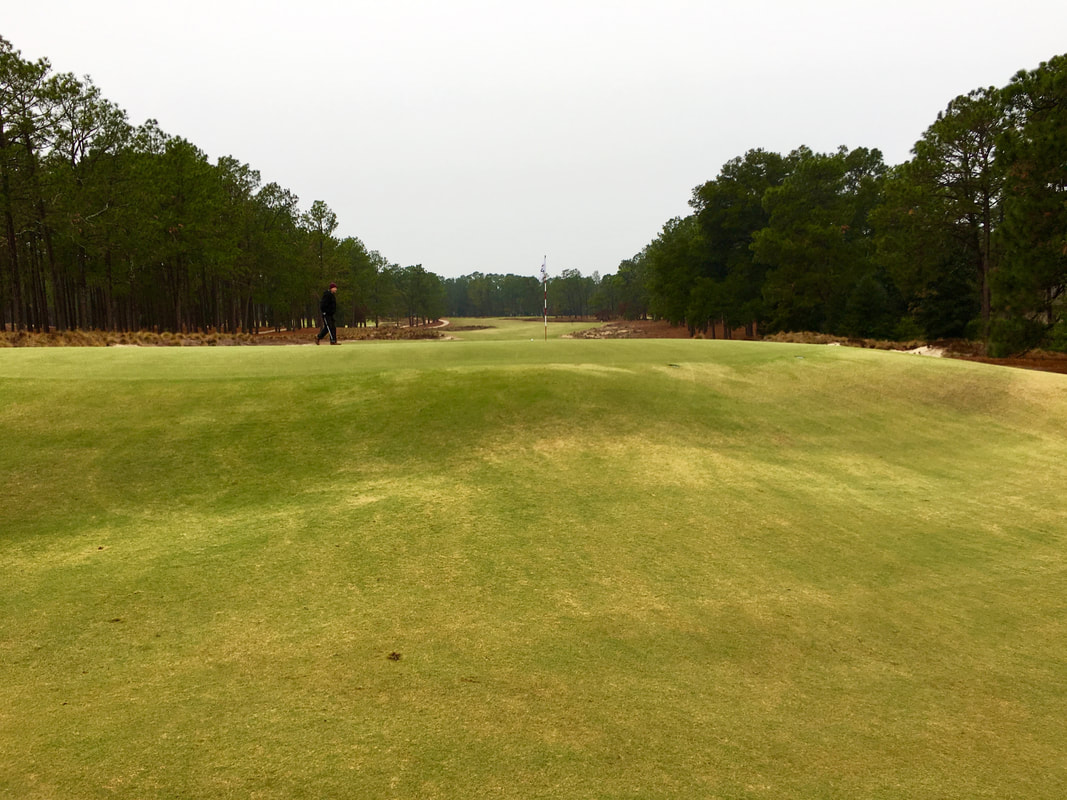
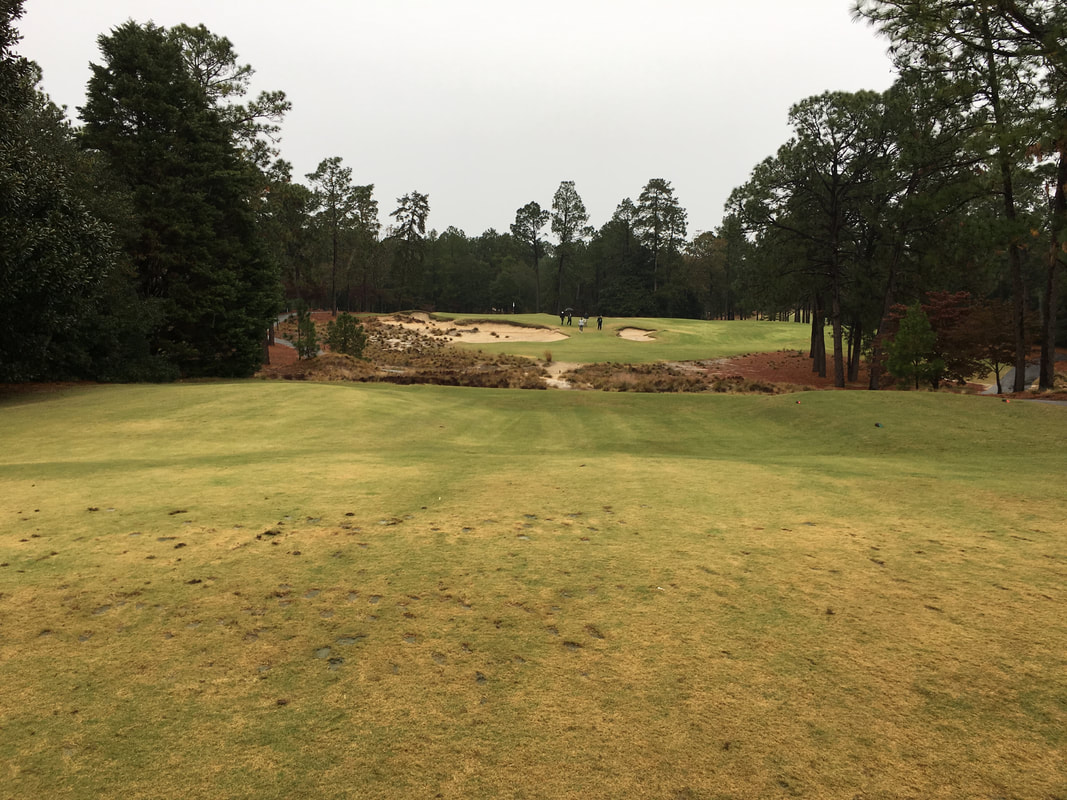
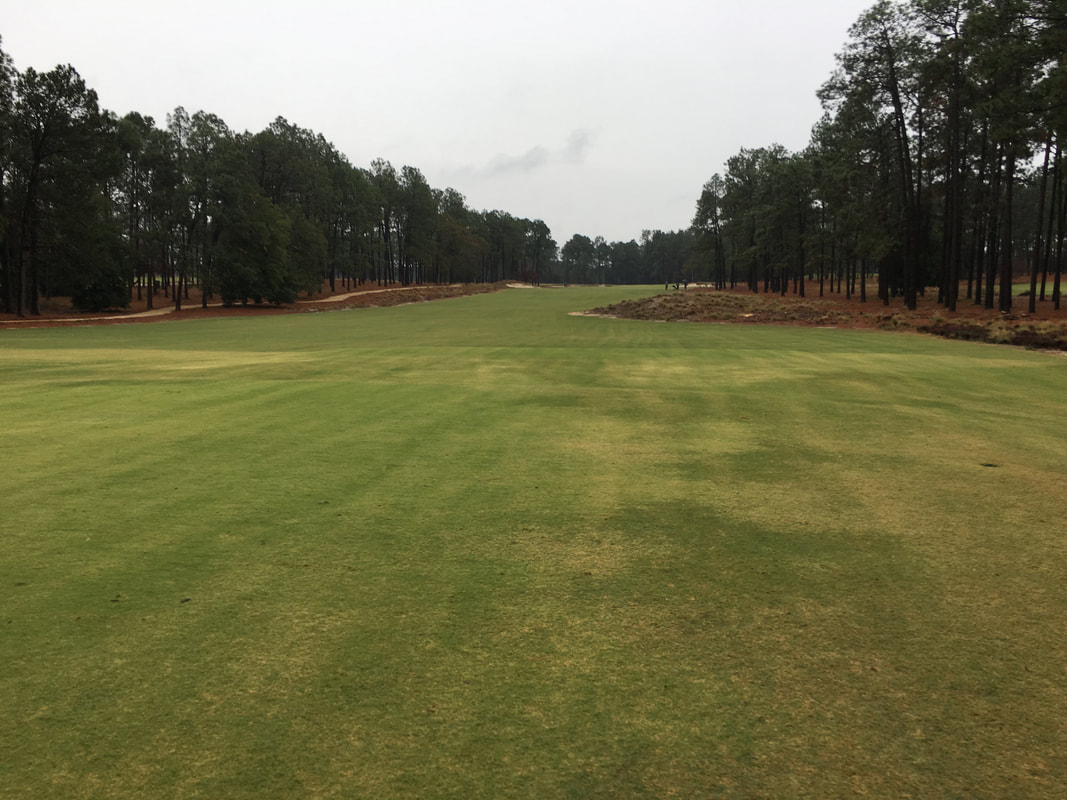
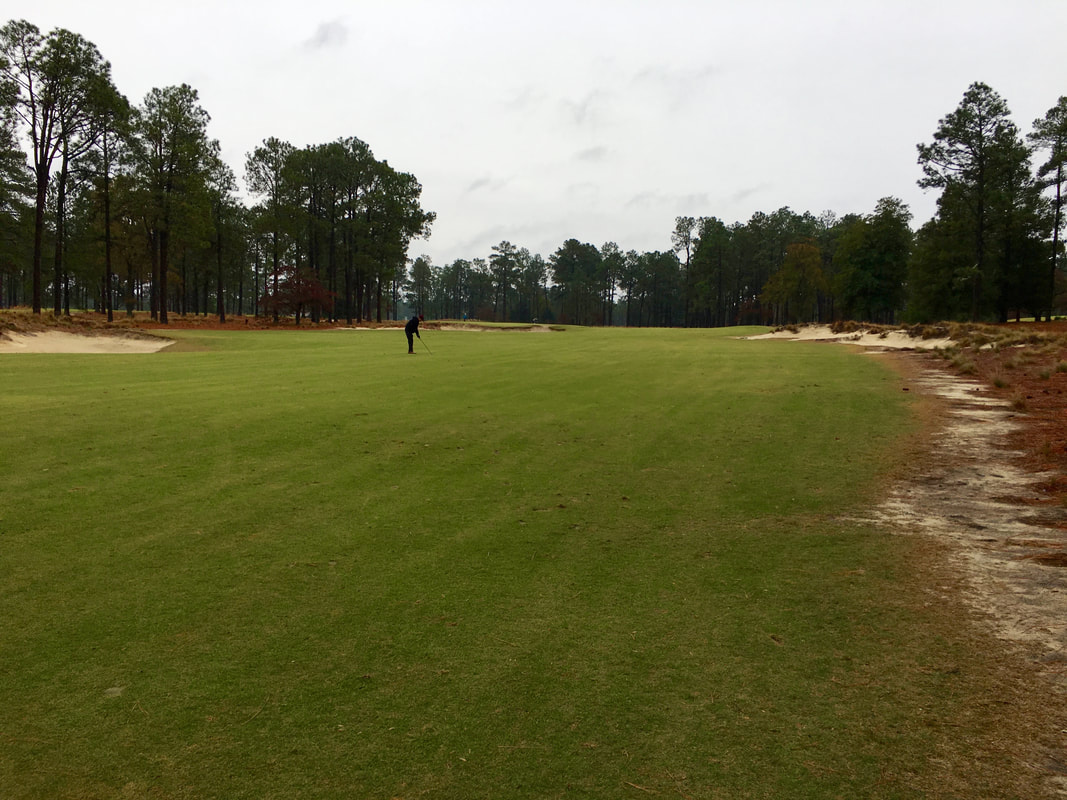
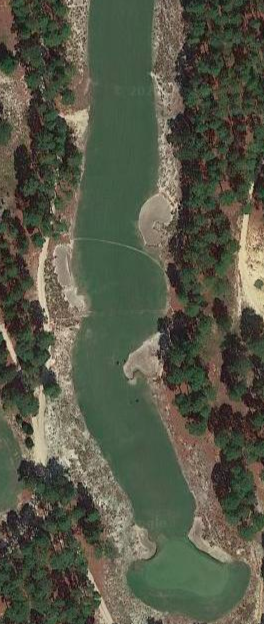
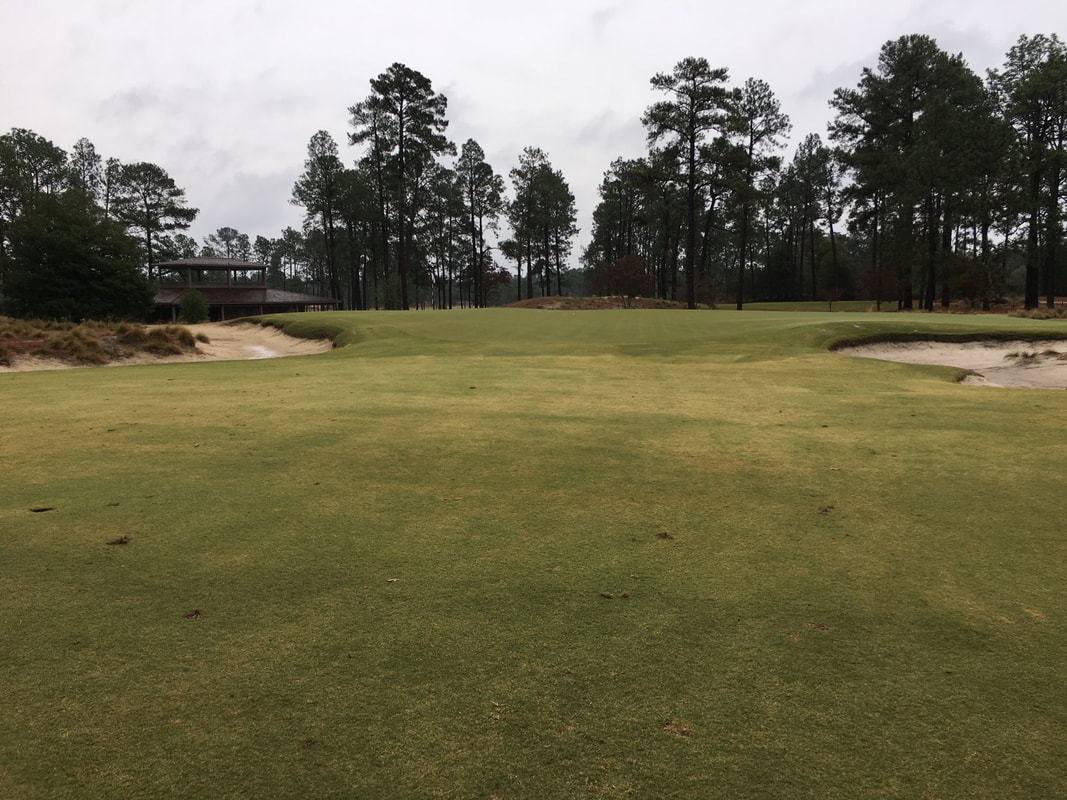
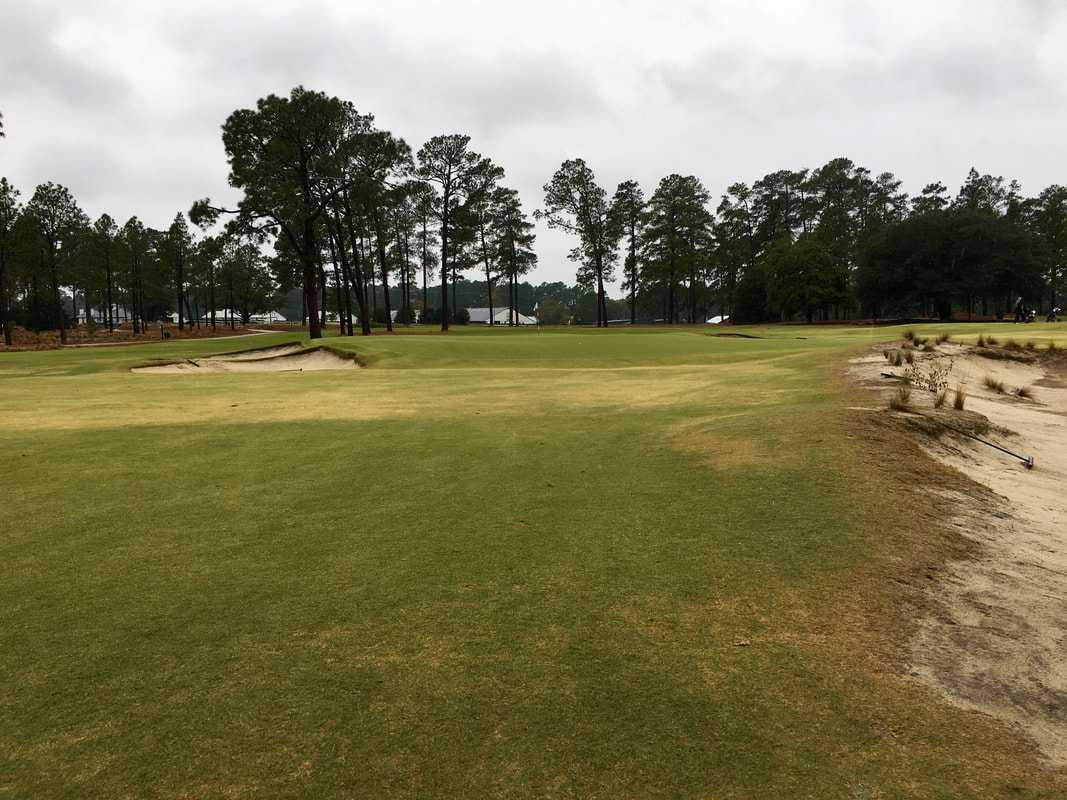
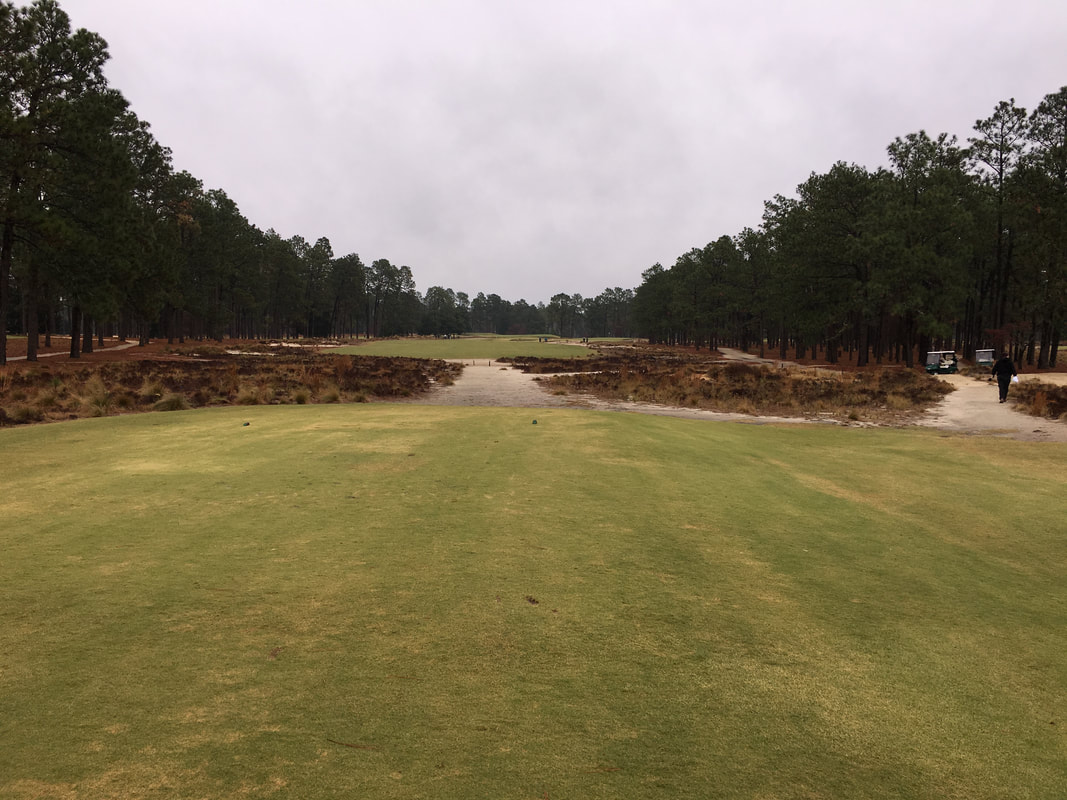
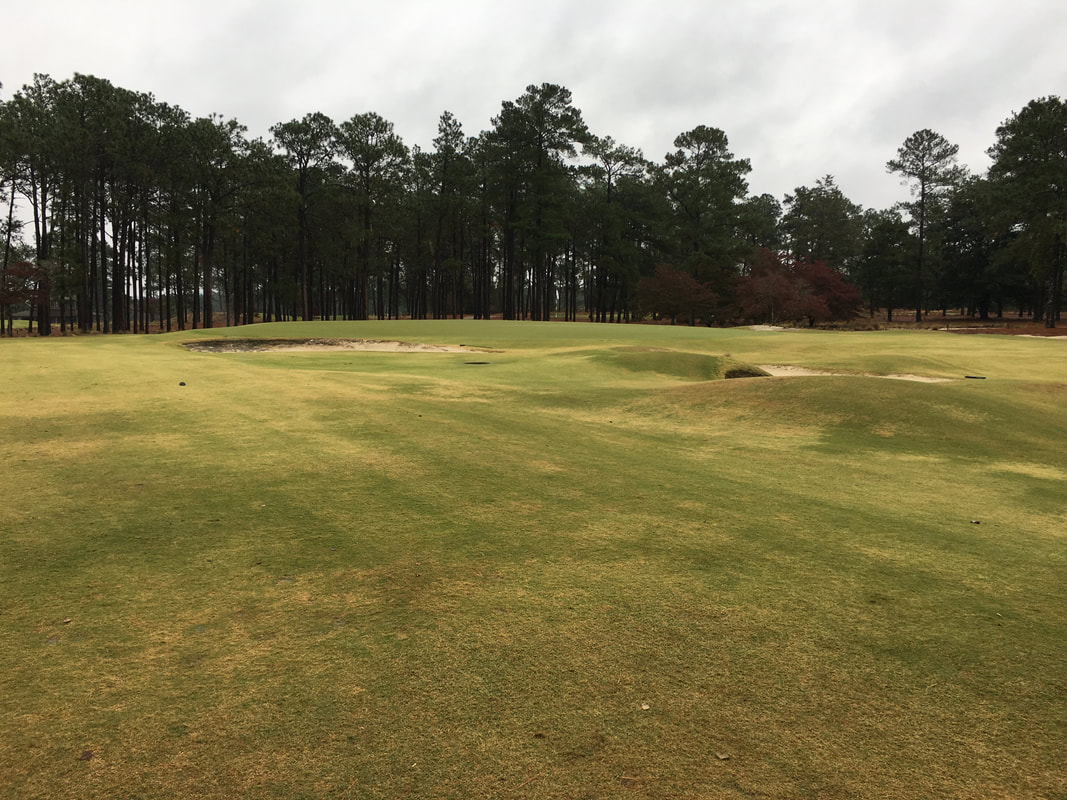
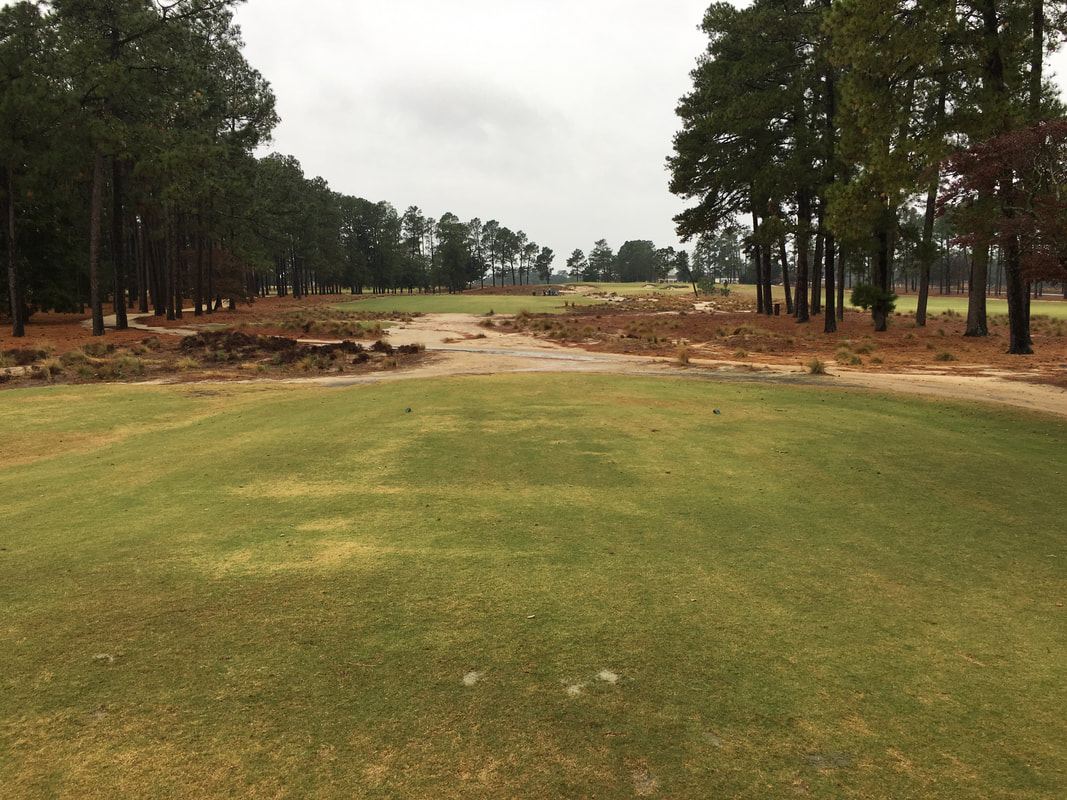
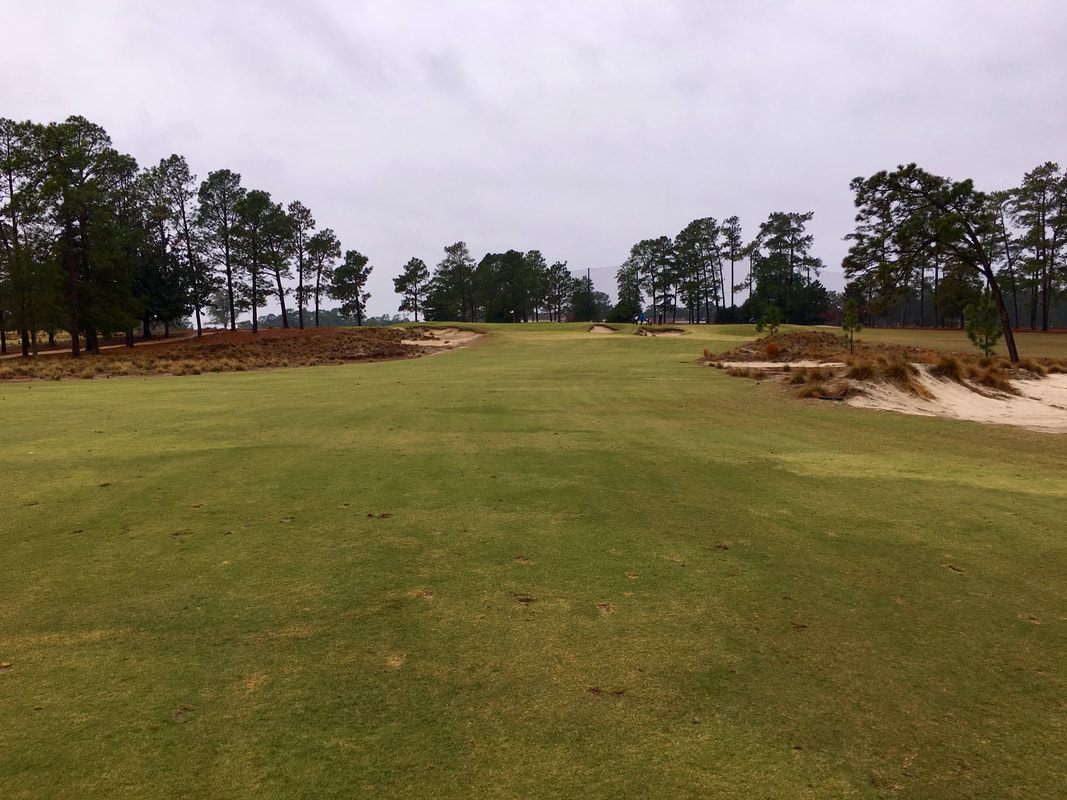
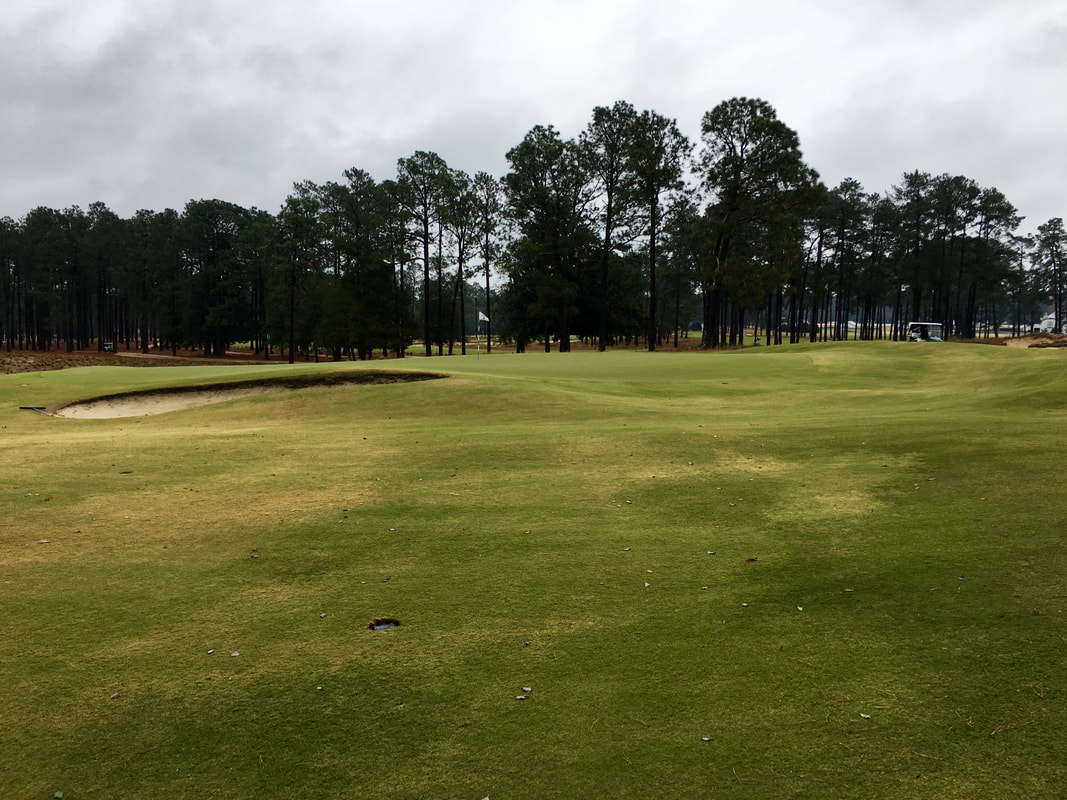
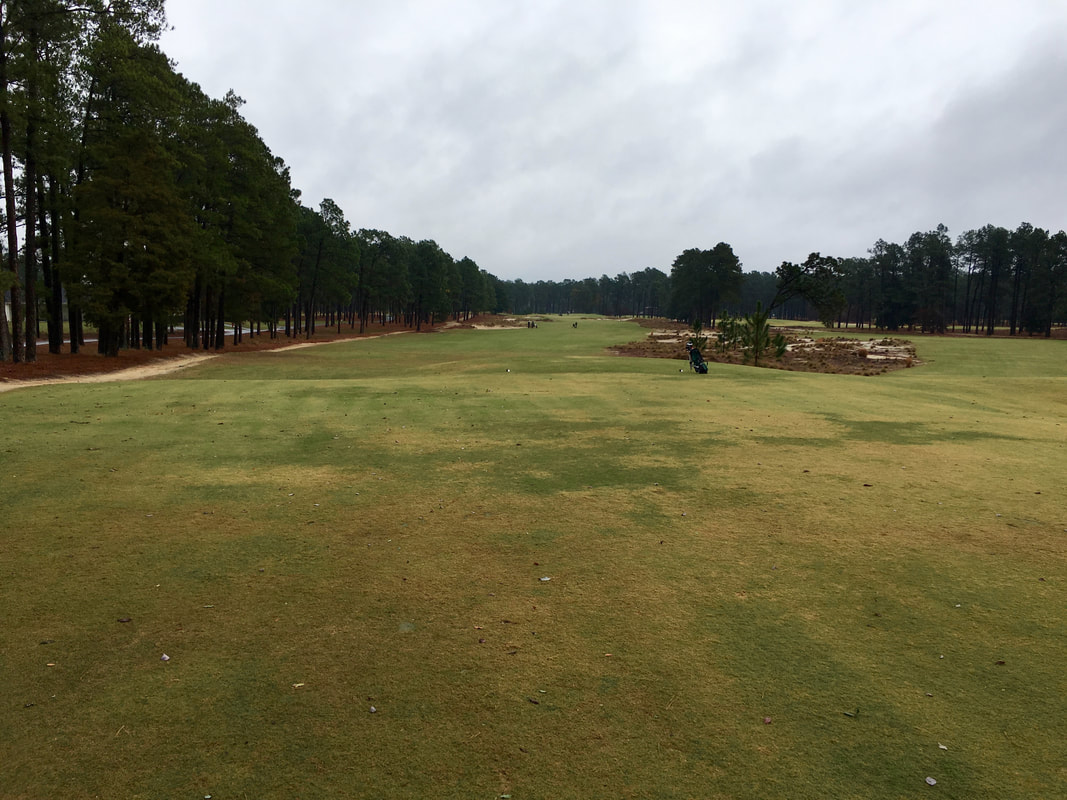
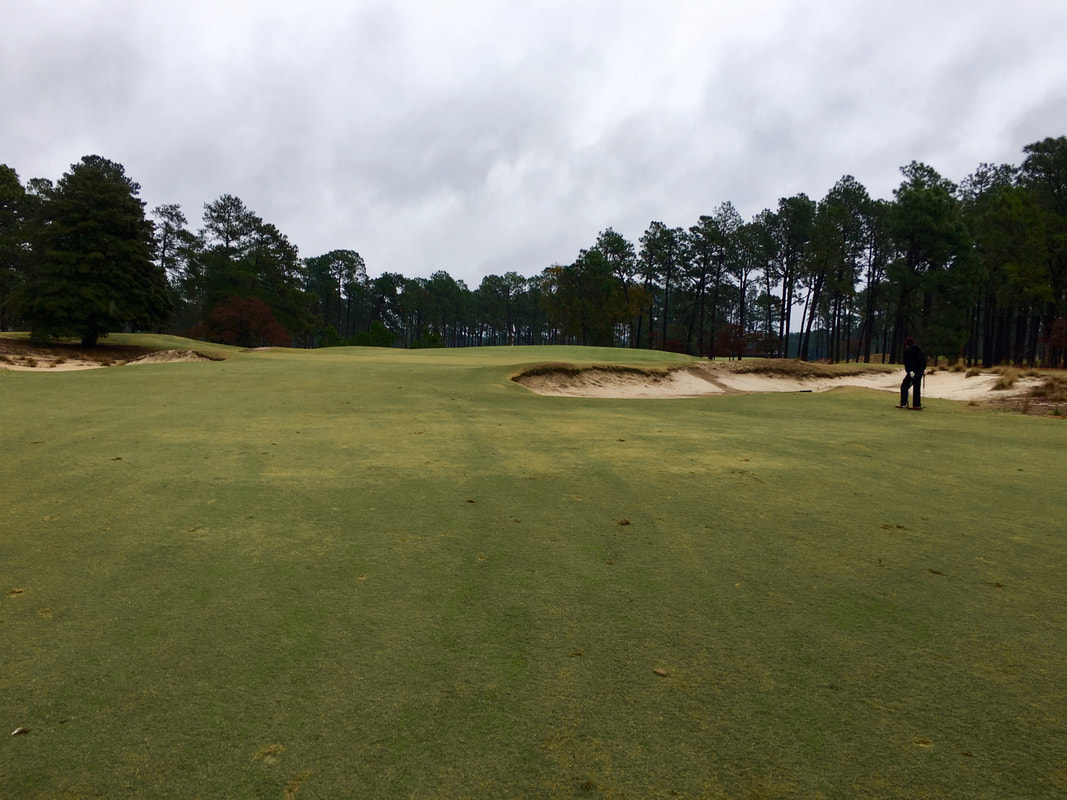

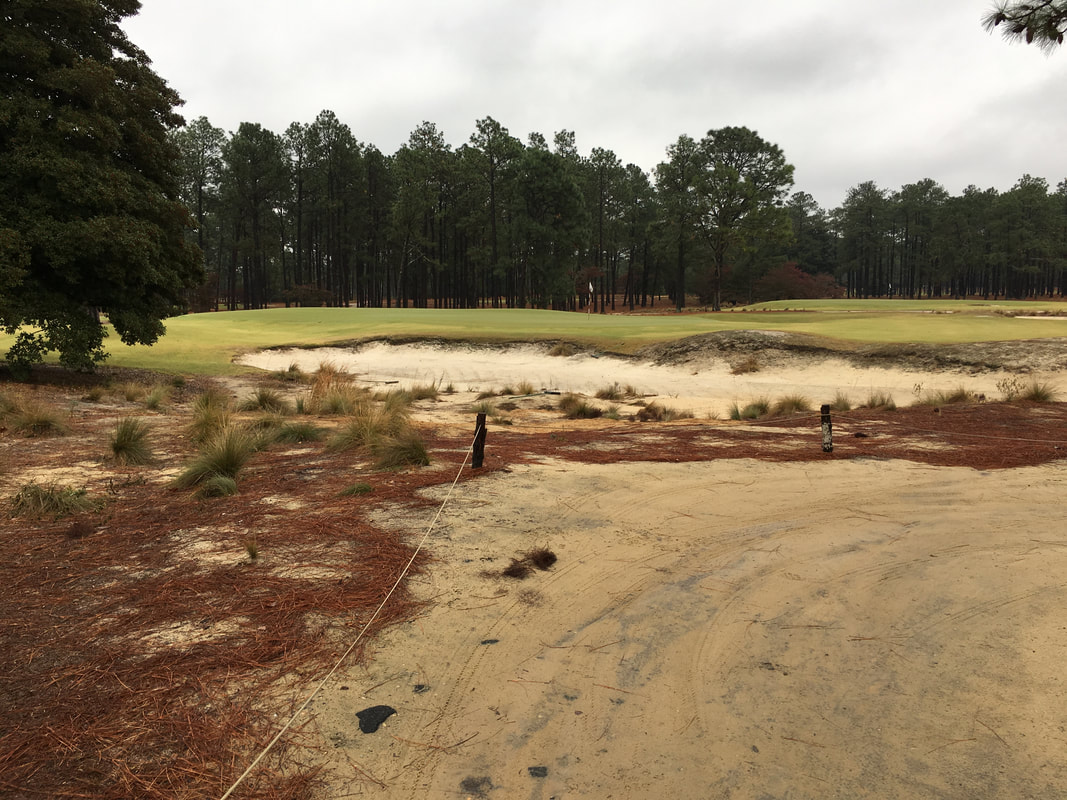
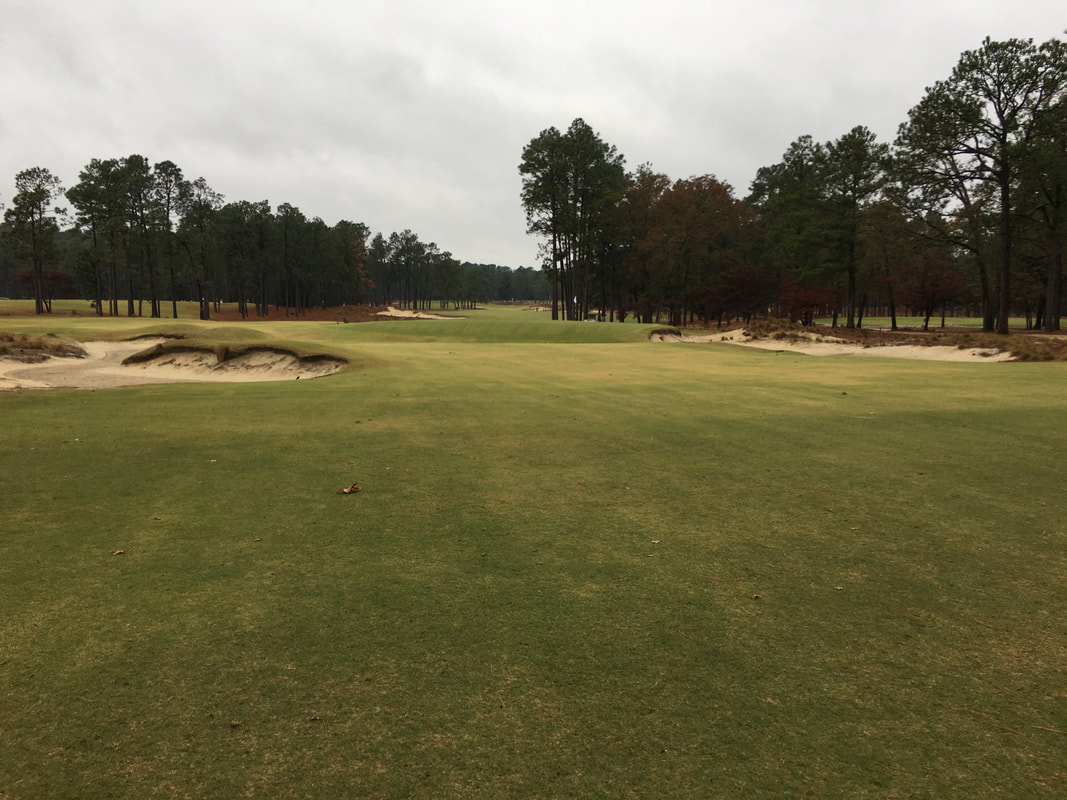
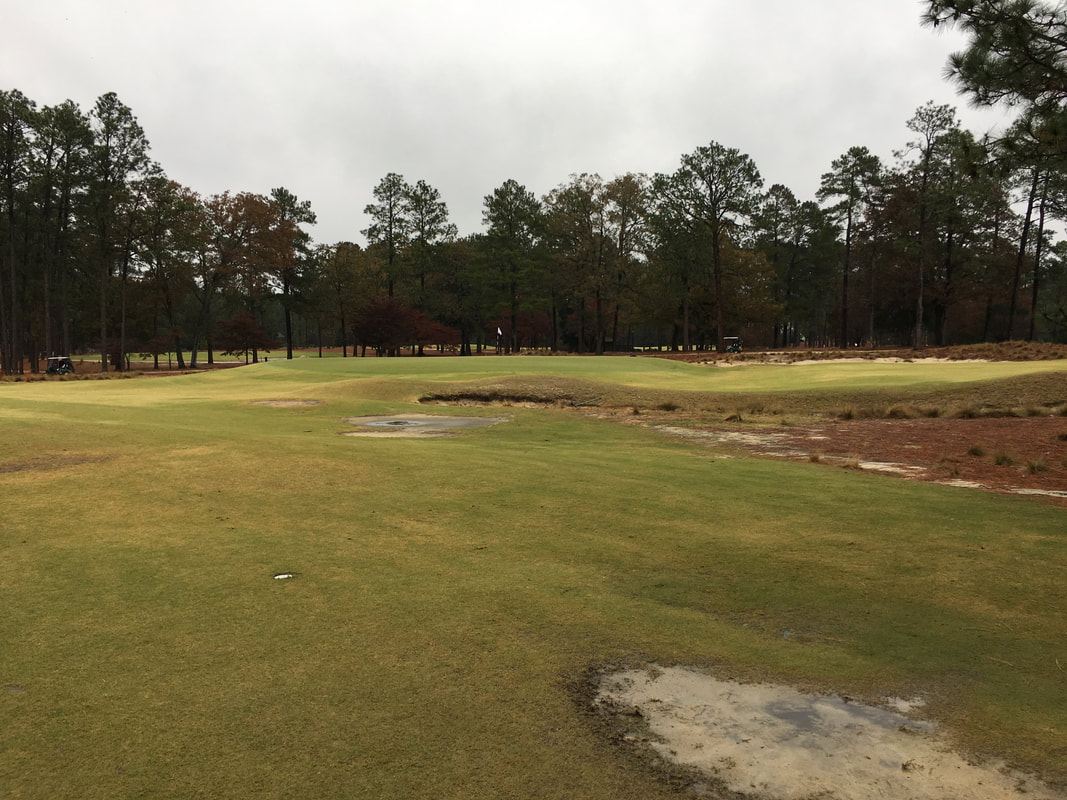
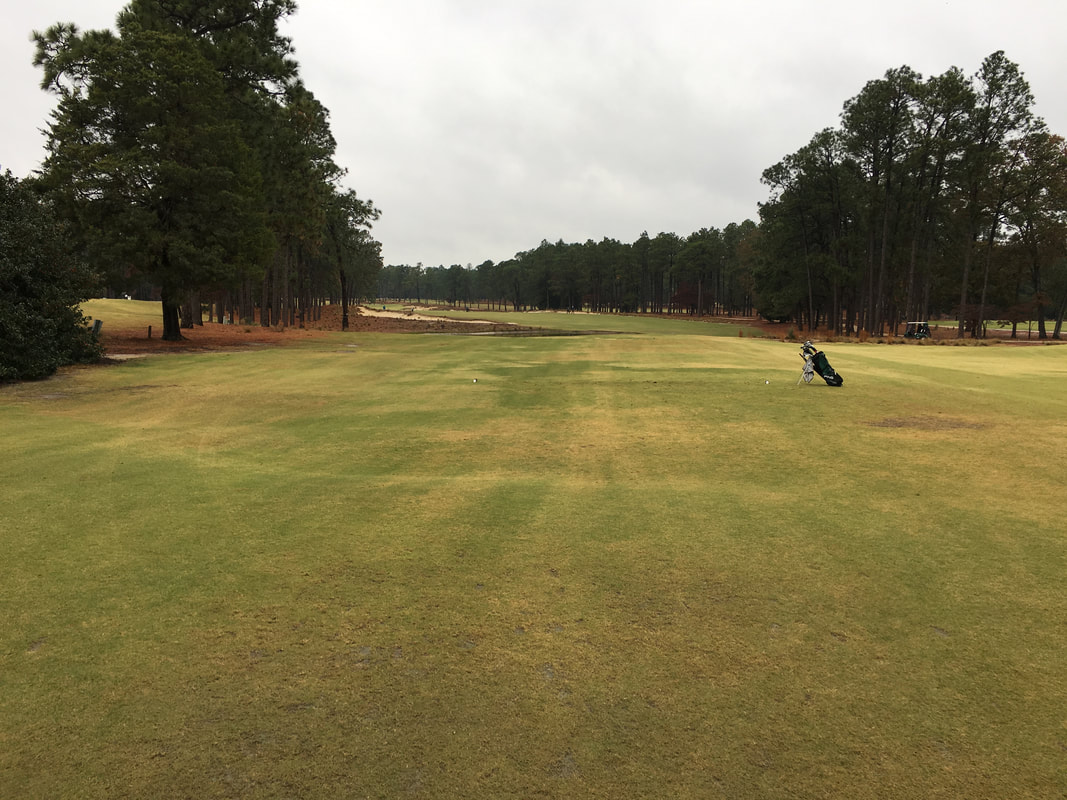
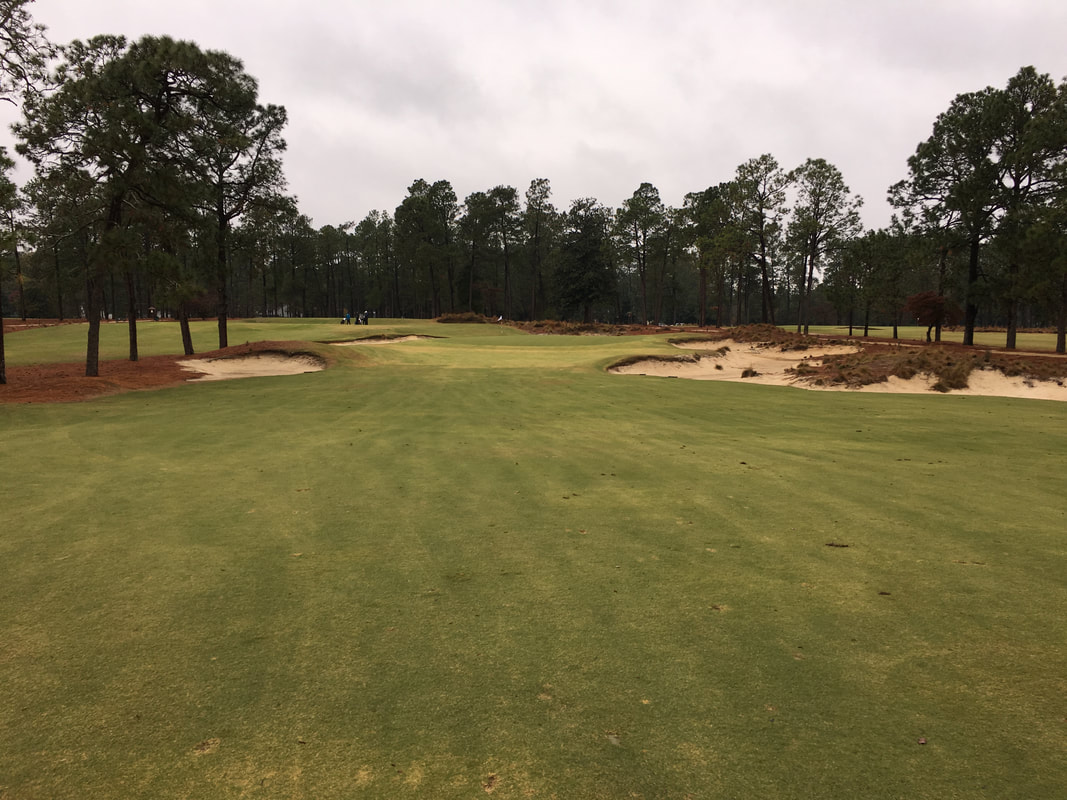
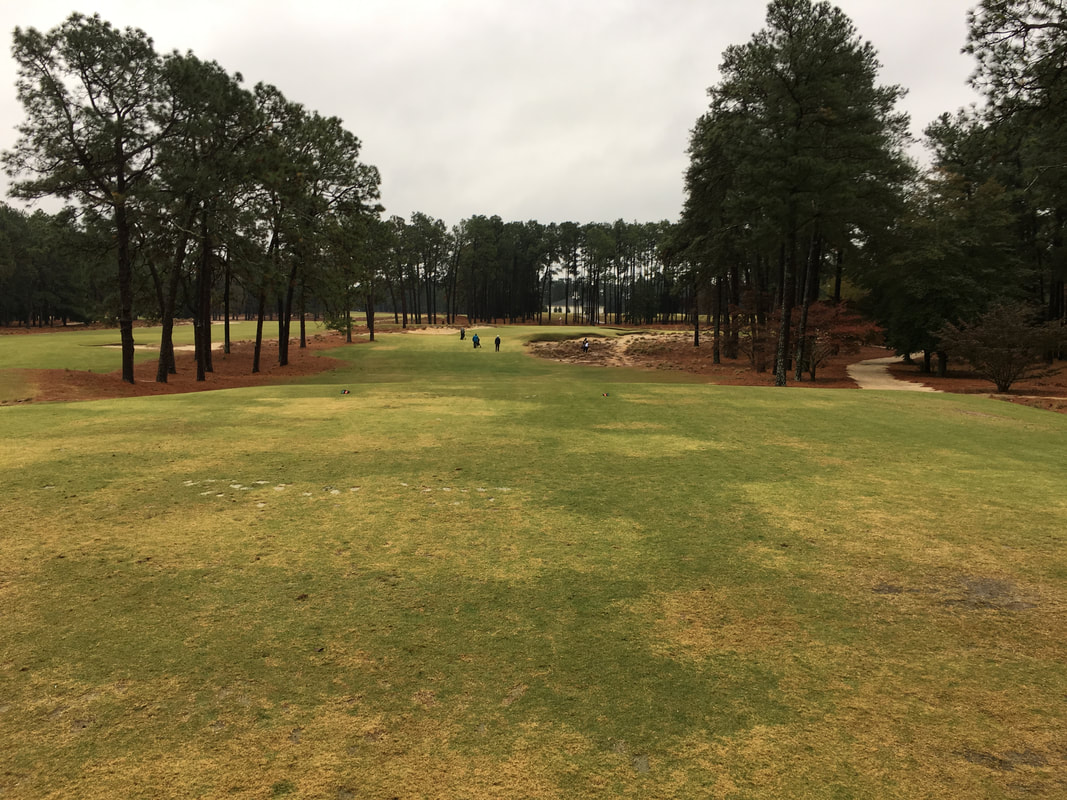
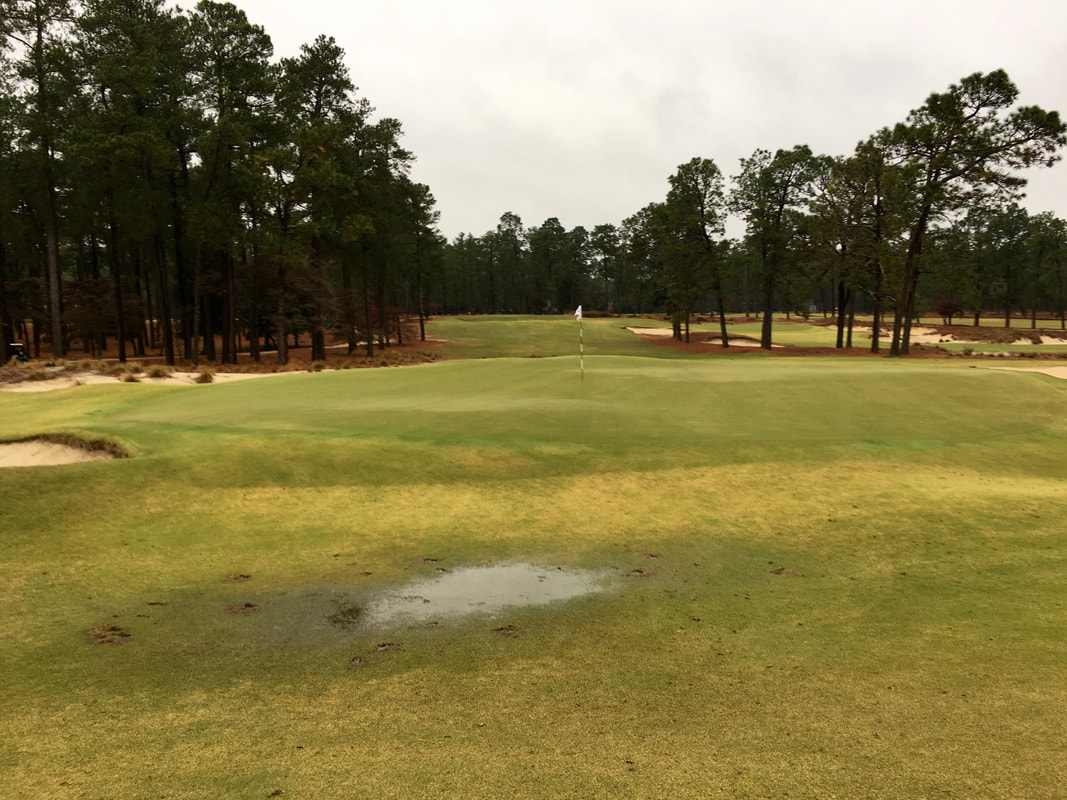
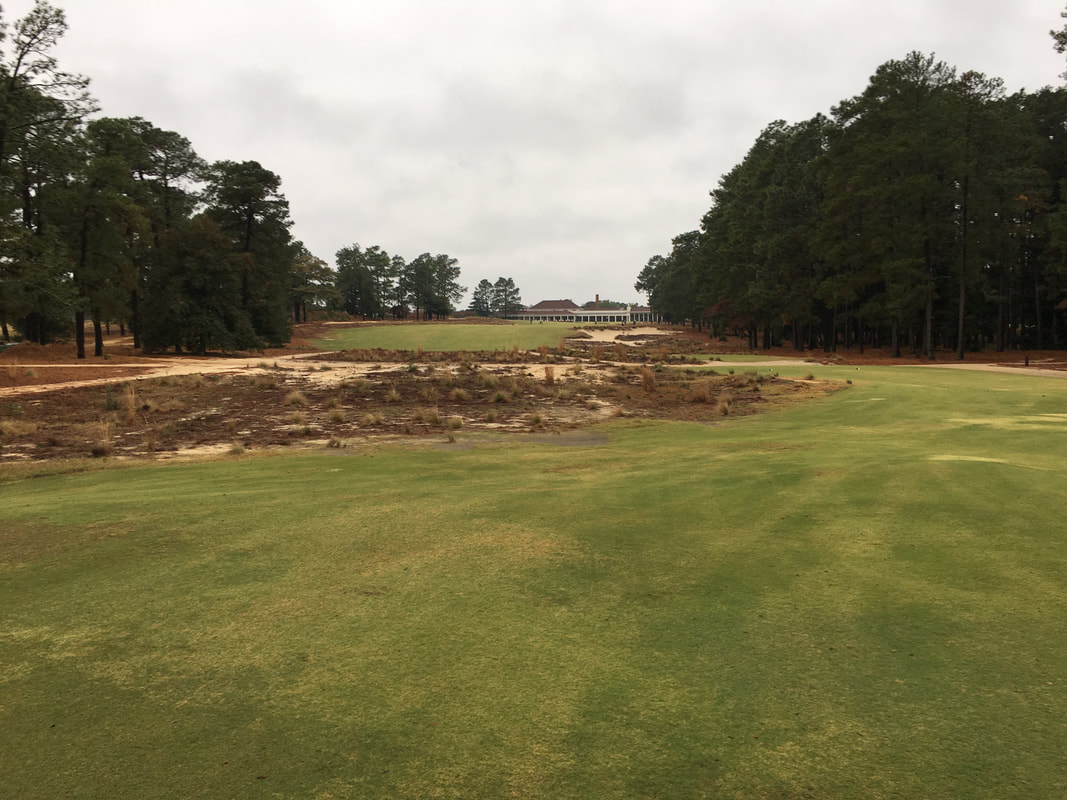
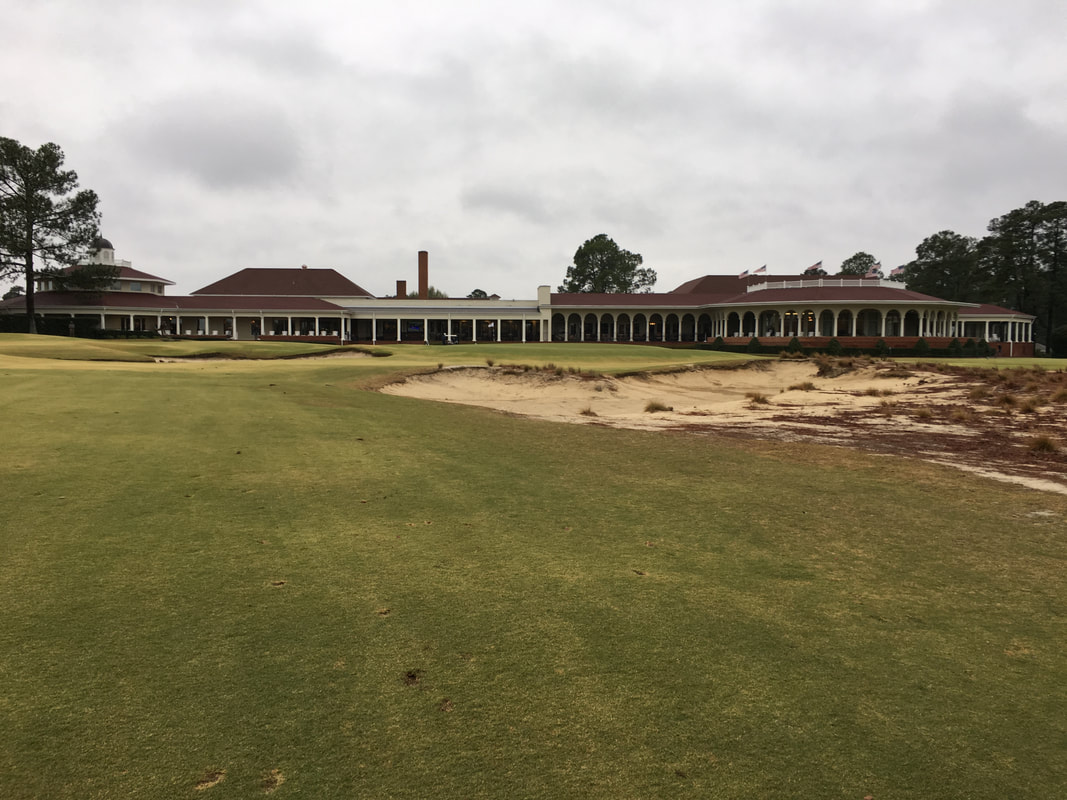
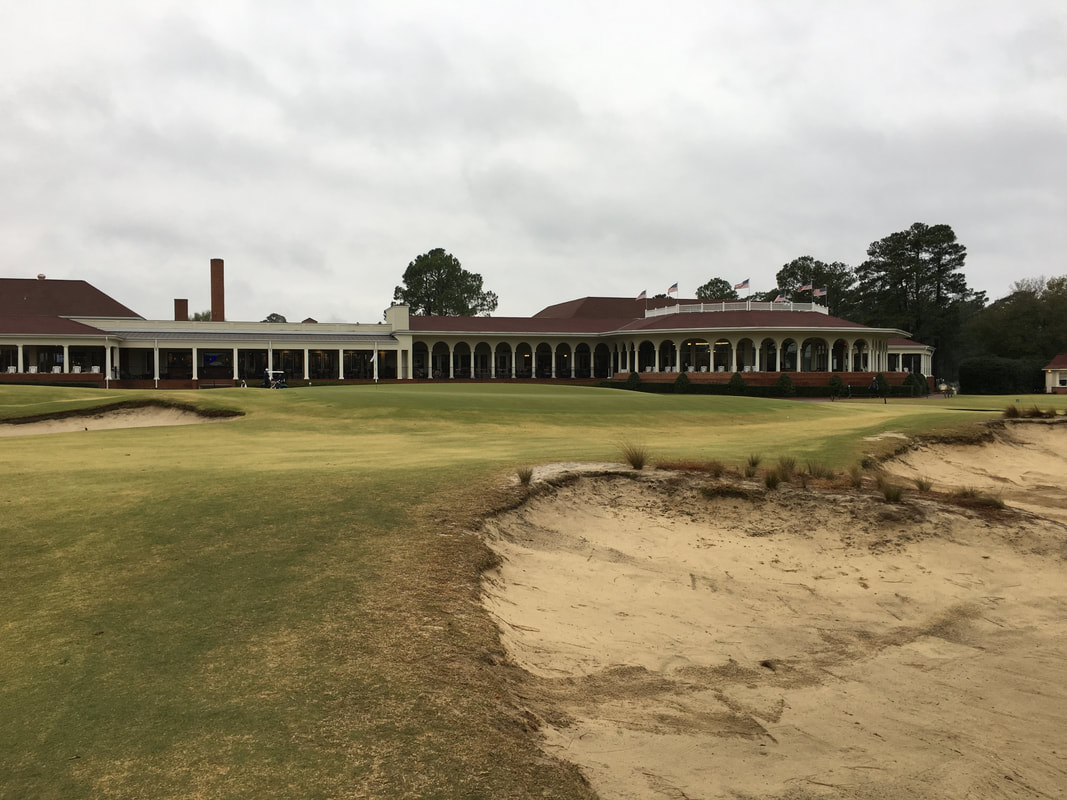
 RSS Feed
RSS Feed